NCERT Solutions Class 12 Maths Chapter 10 Vector Algebra
NCERT solutions for class 12 maths chapter 10 vector algebra elaborates on a very important concept that is used in both mathematics and physics known as vectors. In daily life, we come across many queries such as what is the height of a tree? Or how hard should a ball be hit to reach a goal? The answers to such questions only consist of magnitude. Such quantities are called scalars. However, suppose we also want to find the direction in which a tree is growing or the direction in which the ball needs to be hit to reach the goal then we have to resort to using another quantity known as a vector. Thus, we can say that a quantity having both direction and magnitude is called a vector. In mathematical and physical studies, we require both scalars such as length, mass, time, distance, speed, area, volume, temperature as well as vectors such as displacement, velocity, acceleration, force, weight, etc. NCERT solutions class 12 maths chapter 10 shows kids how to solve questions using vectors.
The sums in the Class 12 maths NCERT solutions chapter 10 are based on real-life examples that enable kids to relate to this concept. The chapter starts with the introduction of some basic vector concepts and builds on those to give a good understanding of complicated topics. The best part about the NCERT solutions Chapter 10 vector algebra is that it uses vernacular and simple language to convey difficult sections so that students of all intelligence quotas can grasp them easily. In this article, we will take a look at a detailed analysis of the entire lesson, download the exercises provided in the links below.
- NCERT Solutions Class 12 Maths Chapter 10 Ex 10.1
- NCERT Solutions Class 12 Maths Chapter 10 Ex 10.2
- NCERT Solutions Class 12 Maths Chapter 10 Ex 10.3
- NCERT Solutions Class 12 Maths Chapter 10 Ex 10.4
- NCERT Solutions Class 12 Maths Chapter 10 Miscellaneous Ex
NCERT Solutions for Class 12 Maths Chapter 10 PDF
The word vector has been derived from the Latin word vectus, which means “to carry”. The ideas of modern vector theory date from around 1800 when Caspar Wessel (1745-1818) and Jean Robert Argand (1768-1822) described how to give the geometric interpretation of a complex number with the help of a directed line segment in a coordinate plane. Further studies made by mathematicians resulted in the topic as we know it today. The links to the NCERT solutions class 12 maths can be found below that contain several such facts and tips to help kids study the subject matter with enthusiasm.
☛ Download Class 12 Maths NCERT Solutions Chapter 10 Vector Algebra
NCERT Class 12 Maths Chapter 10
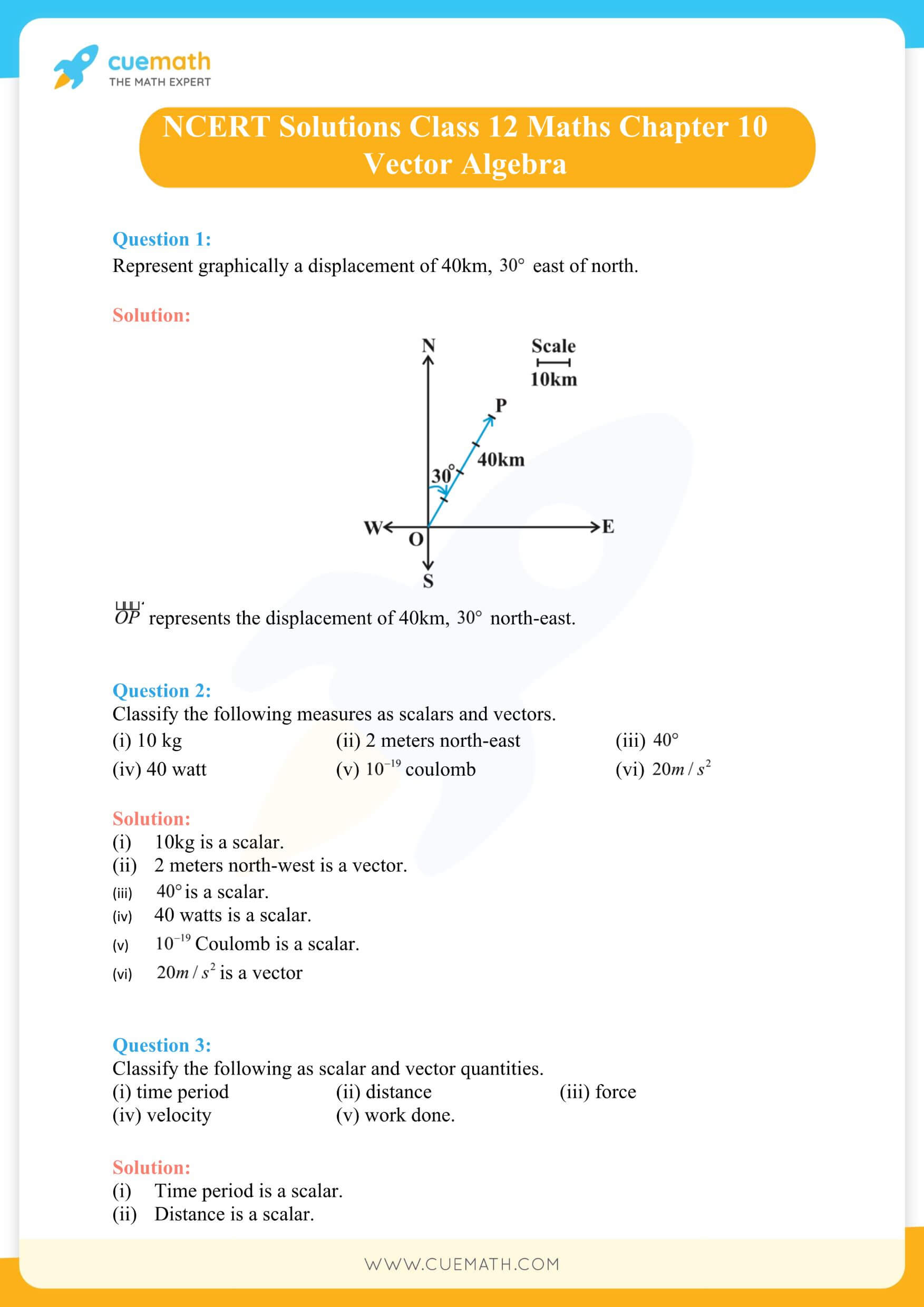
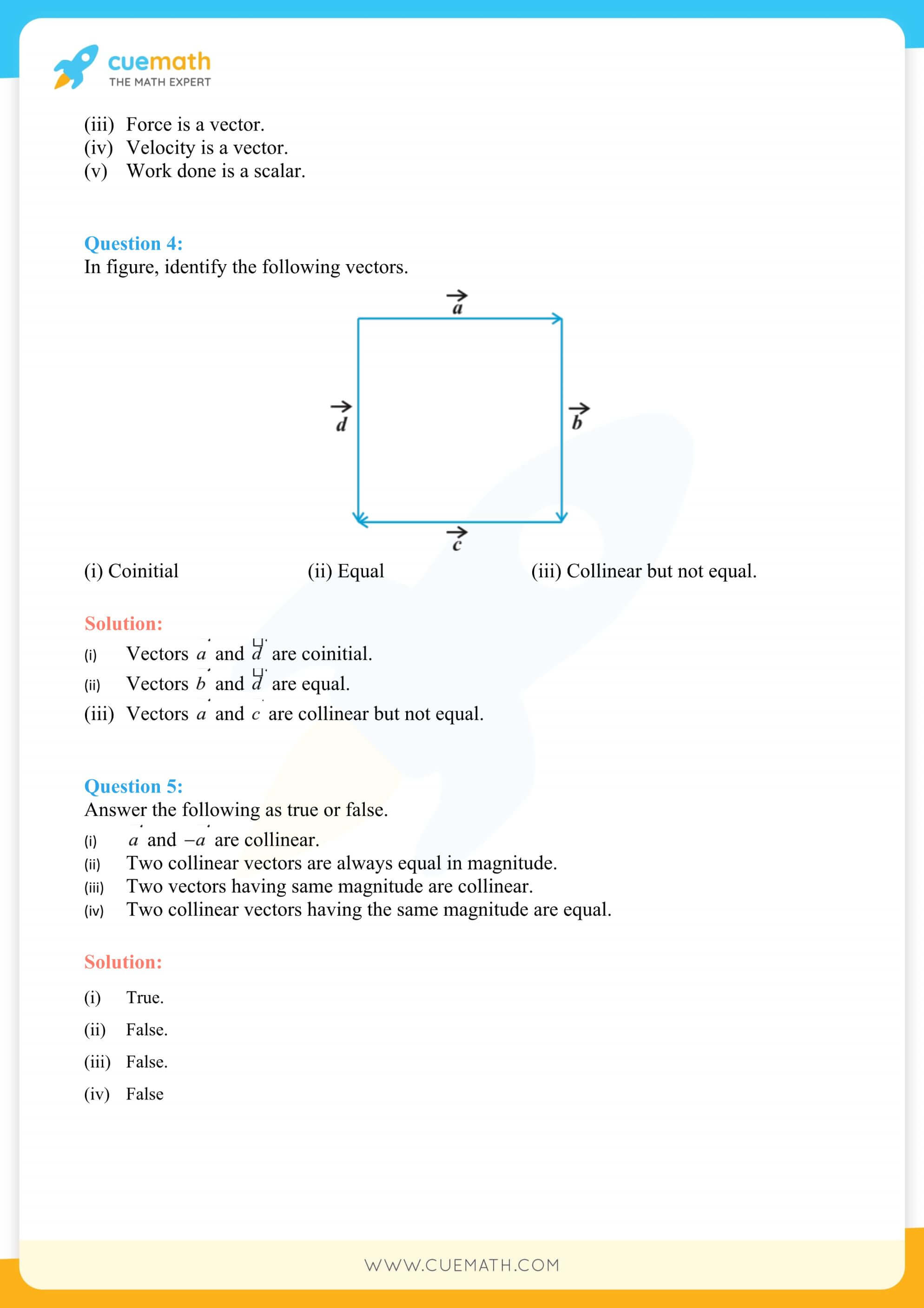
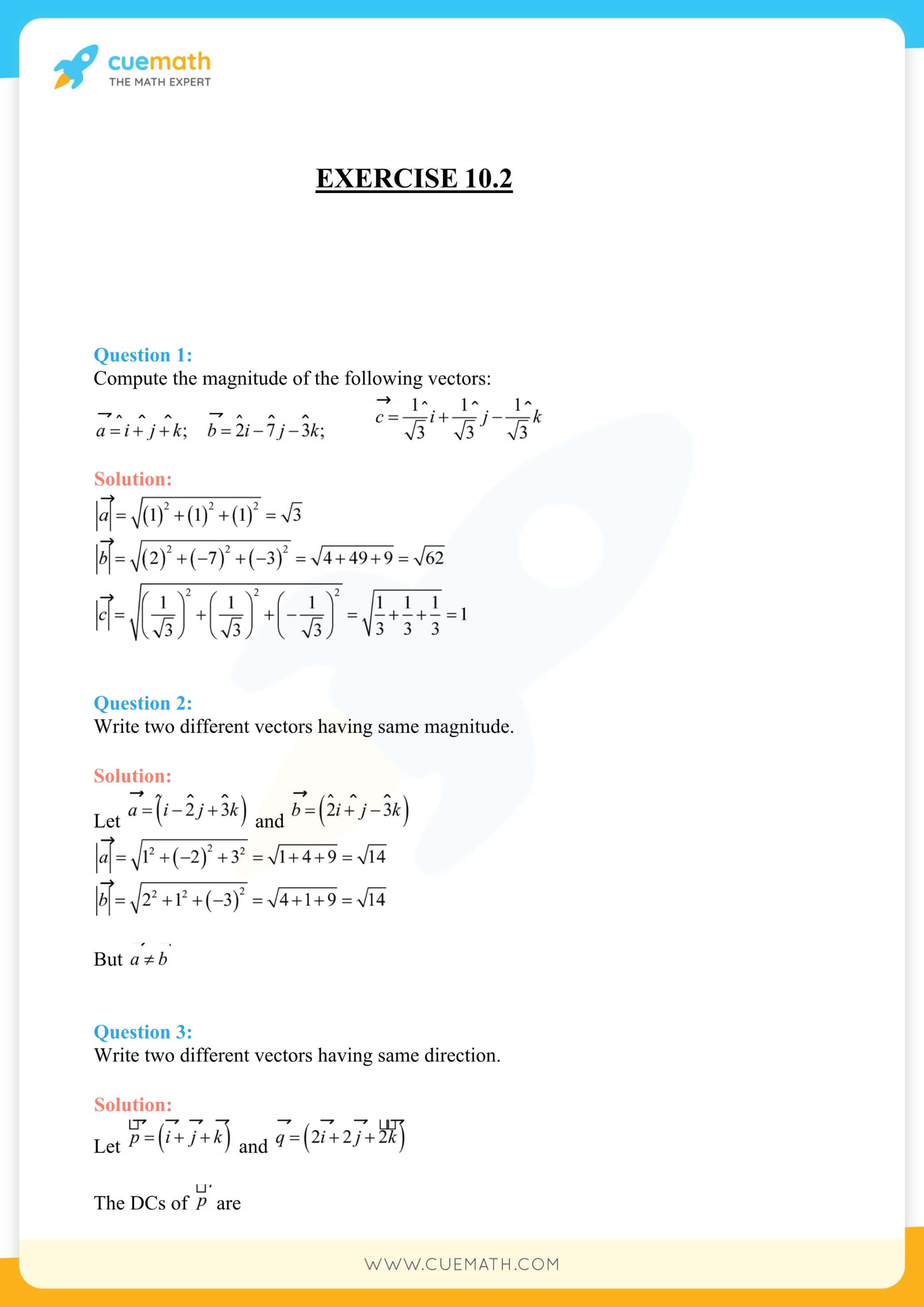
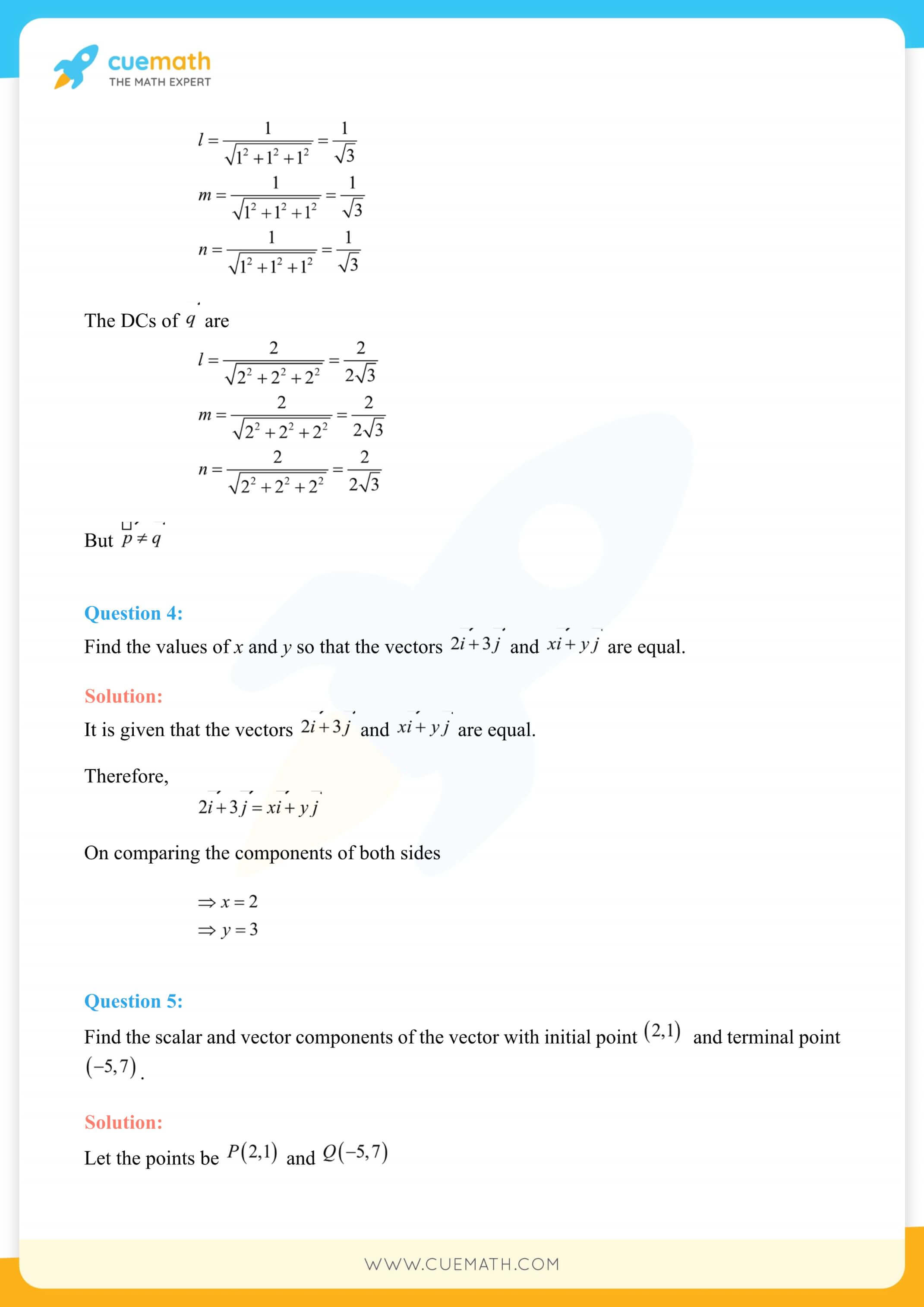
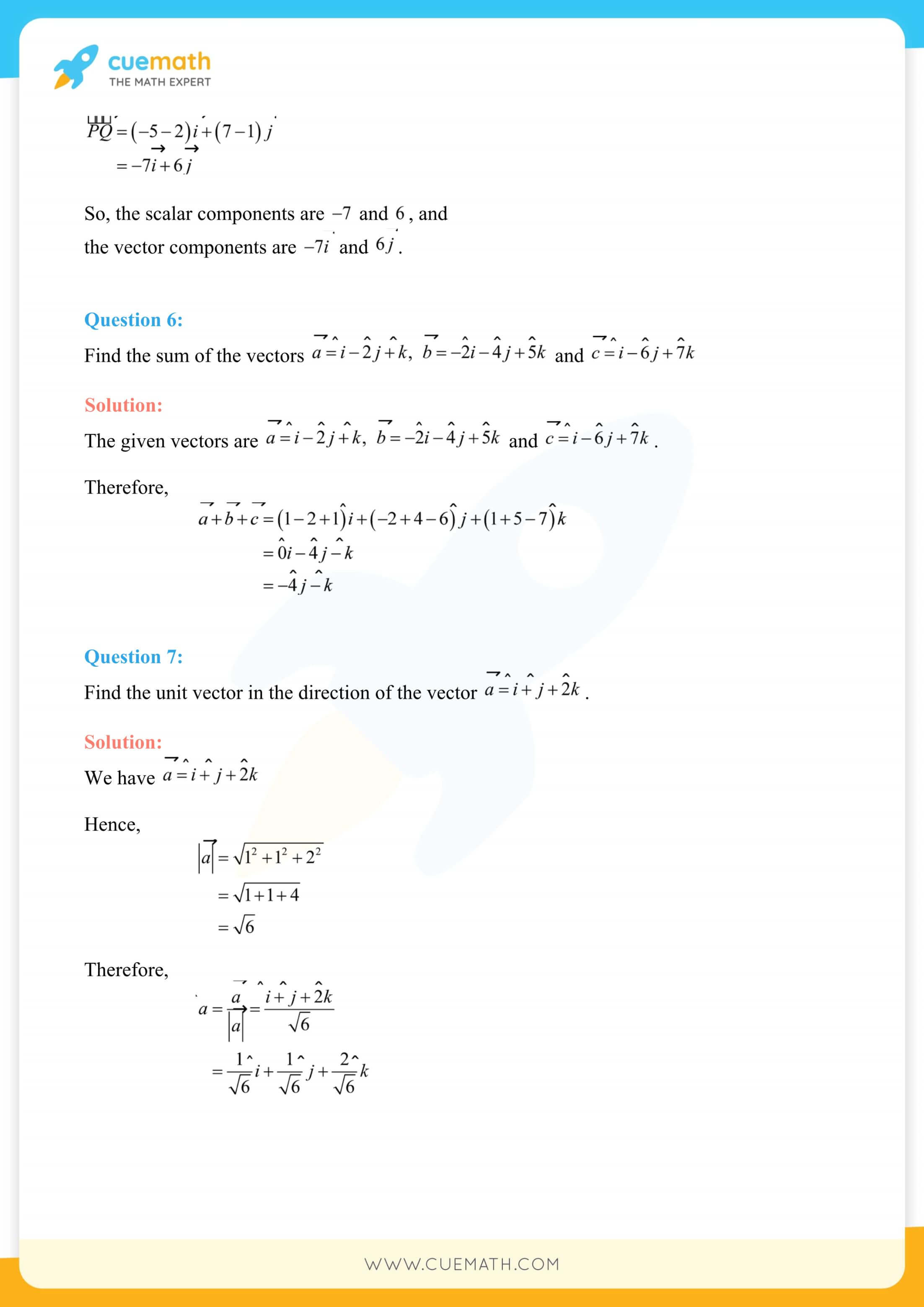
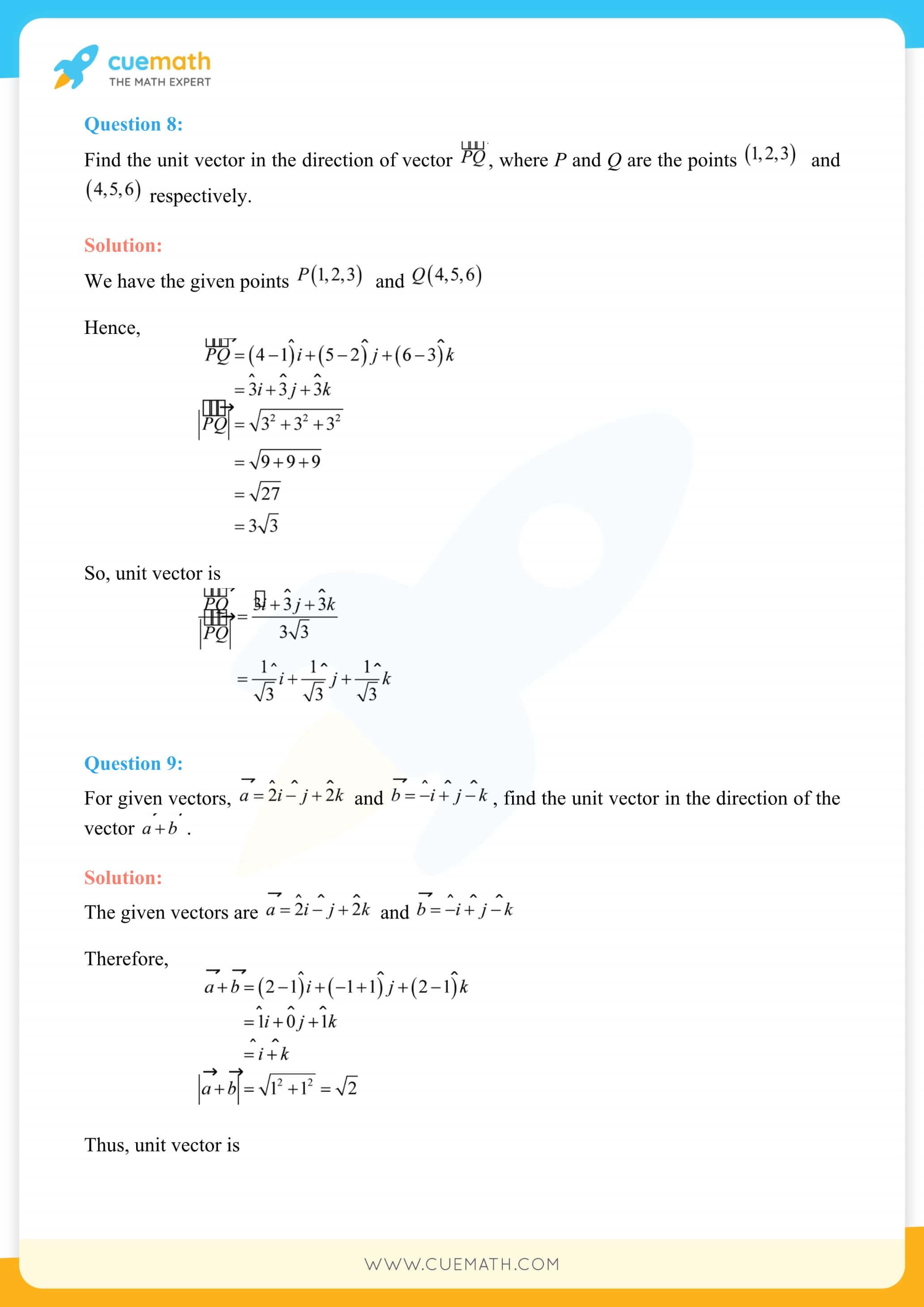
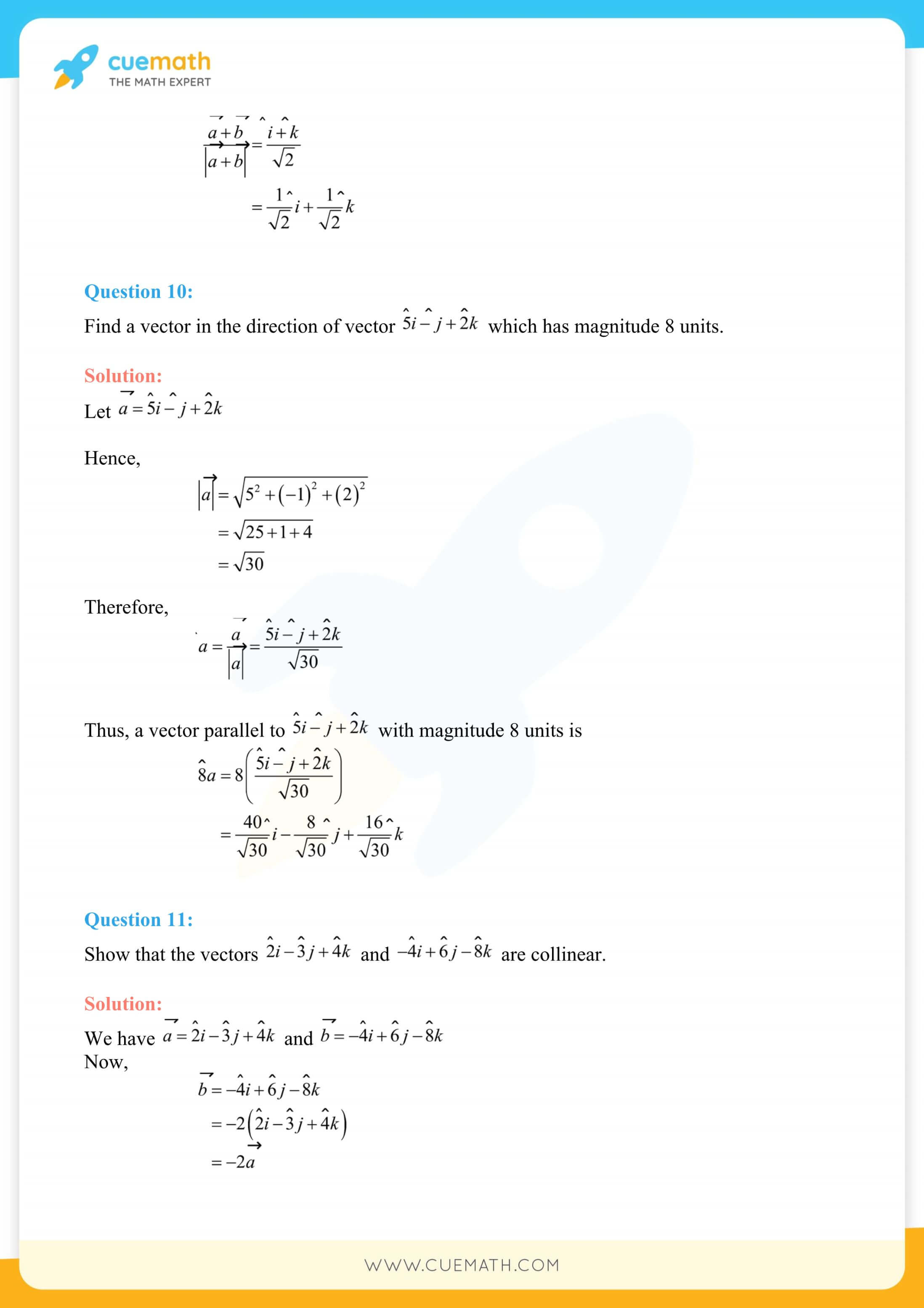
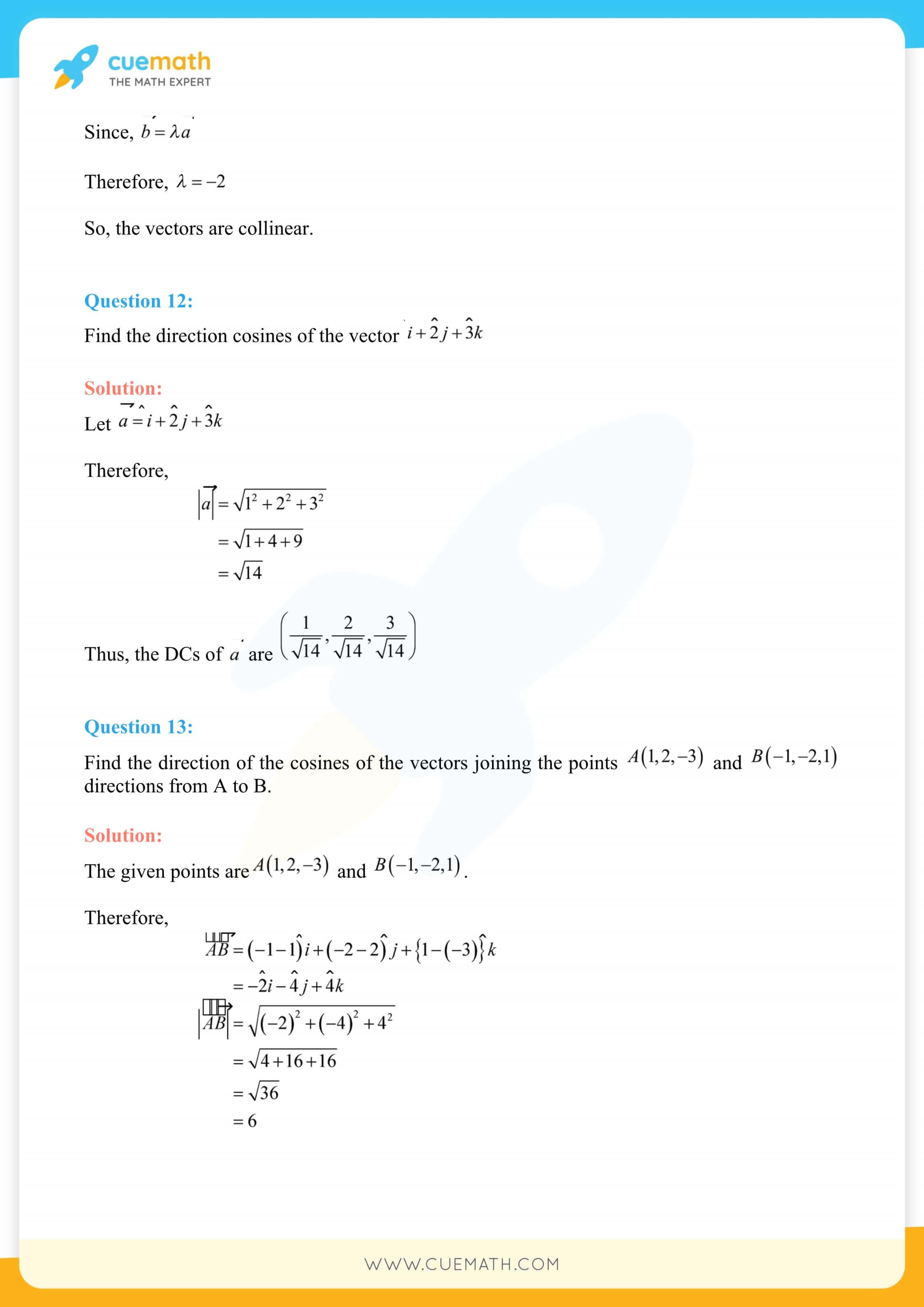
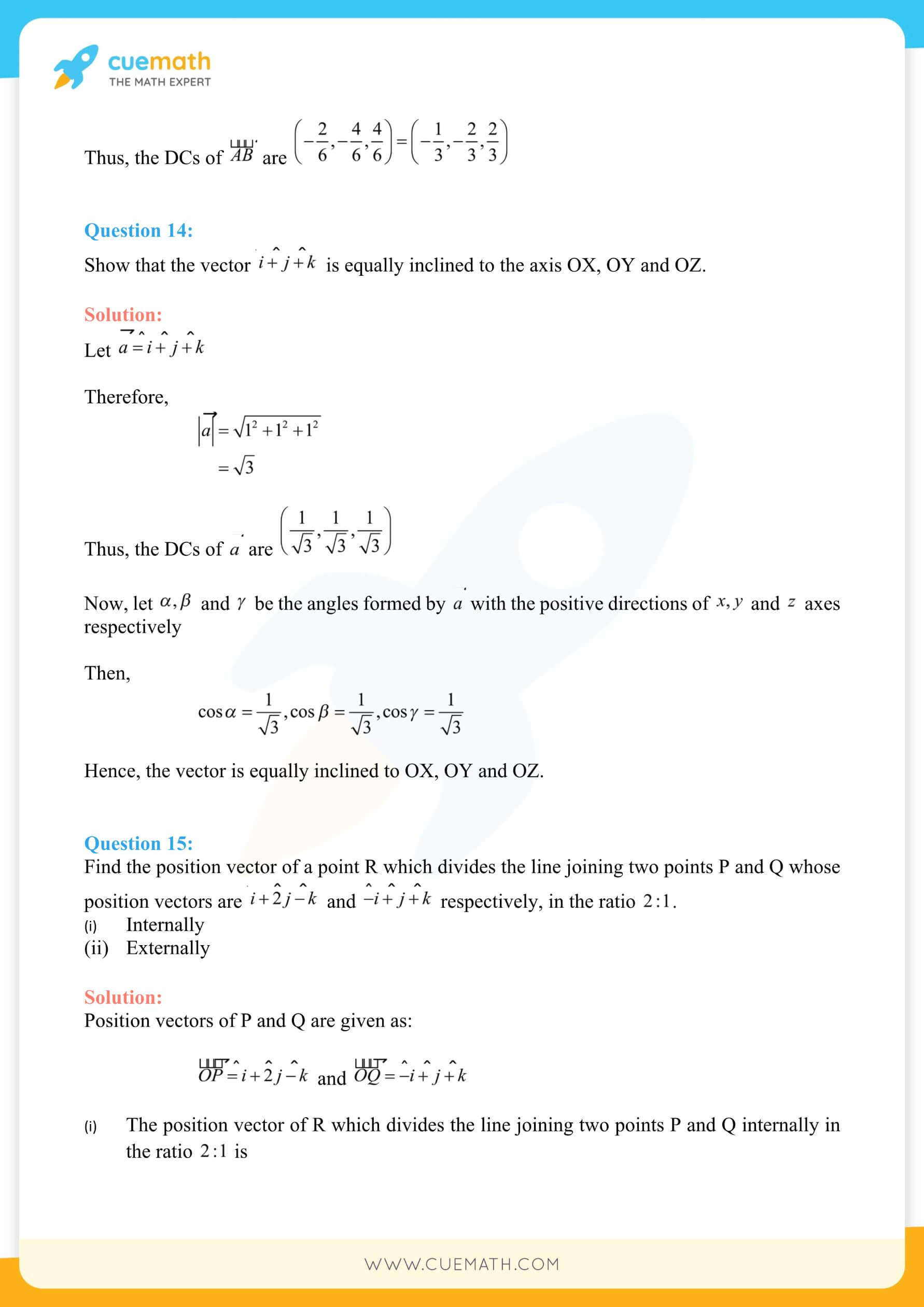
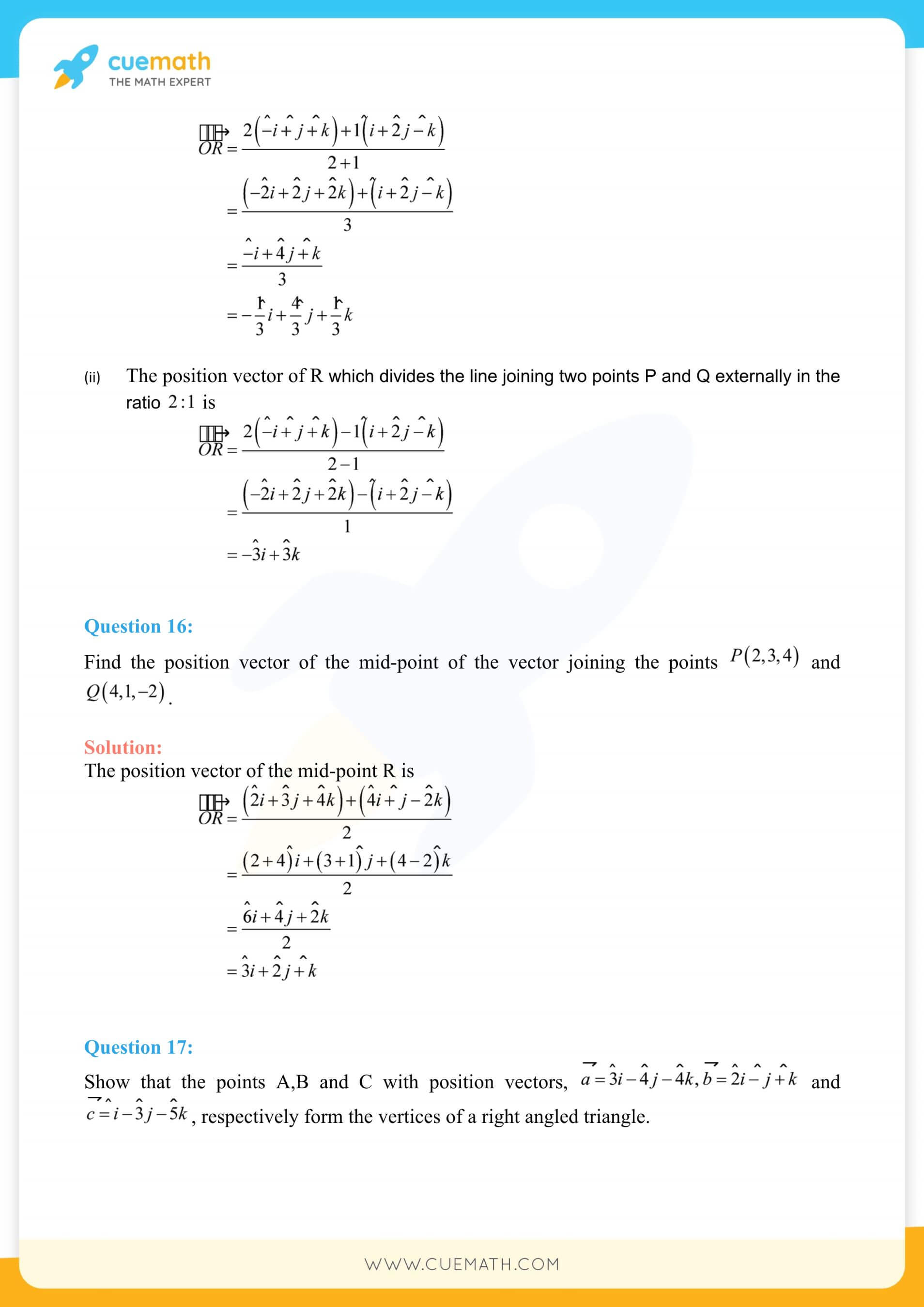
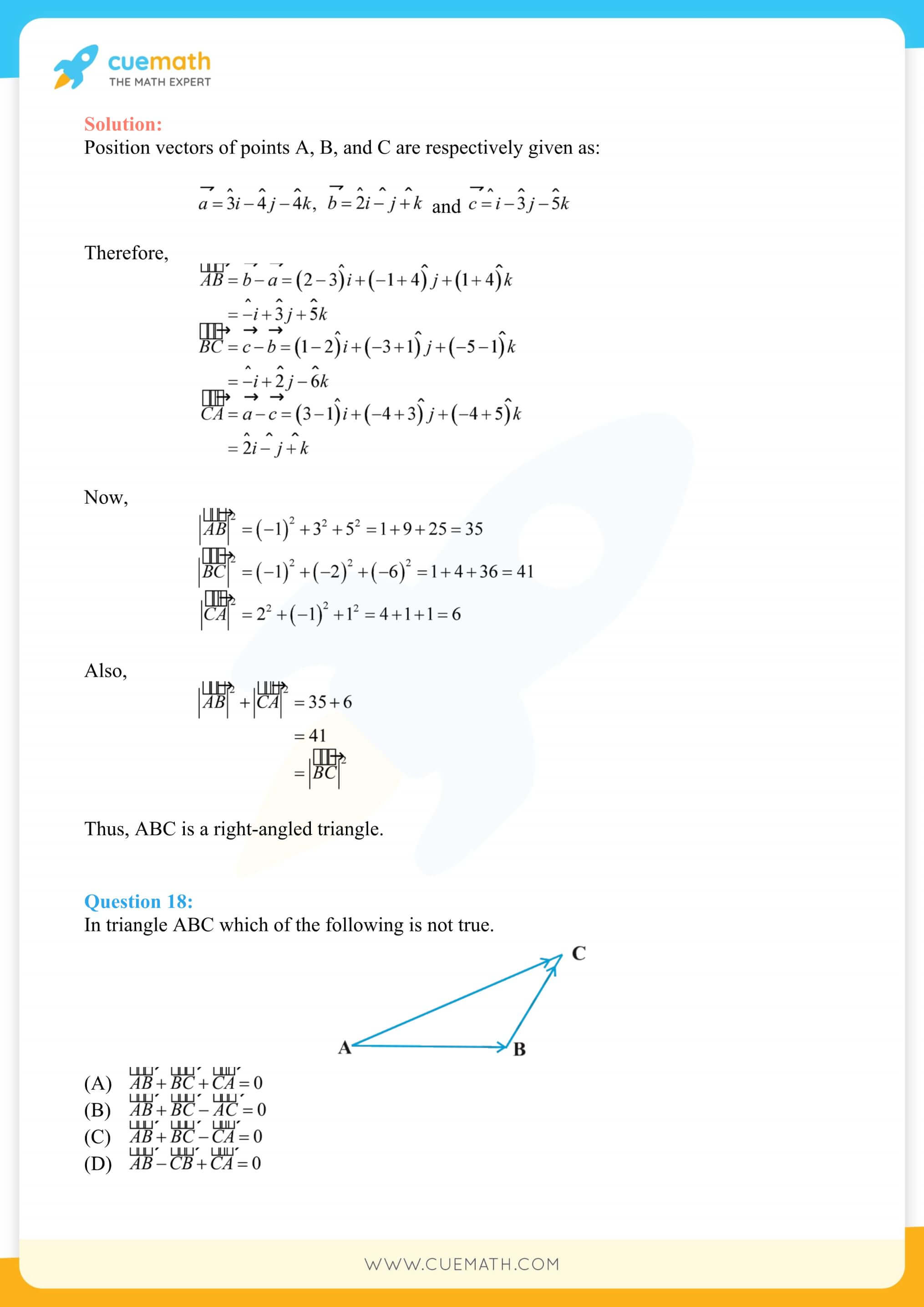
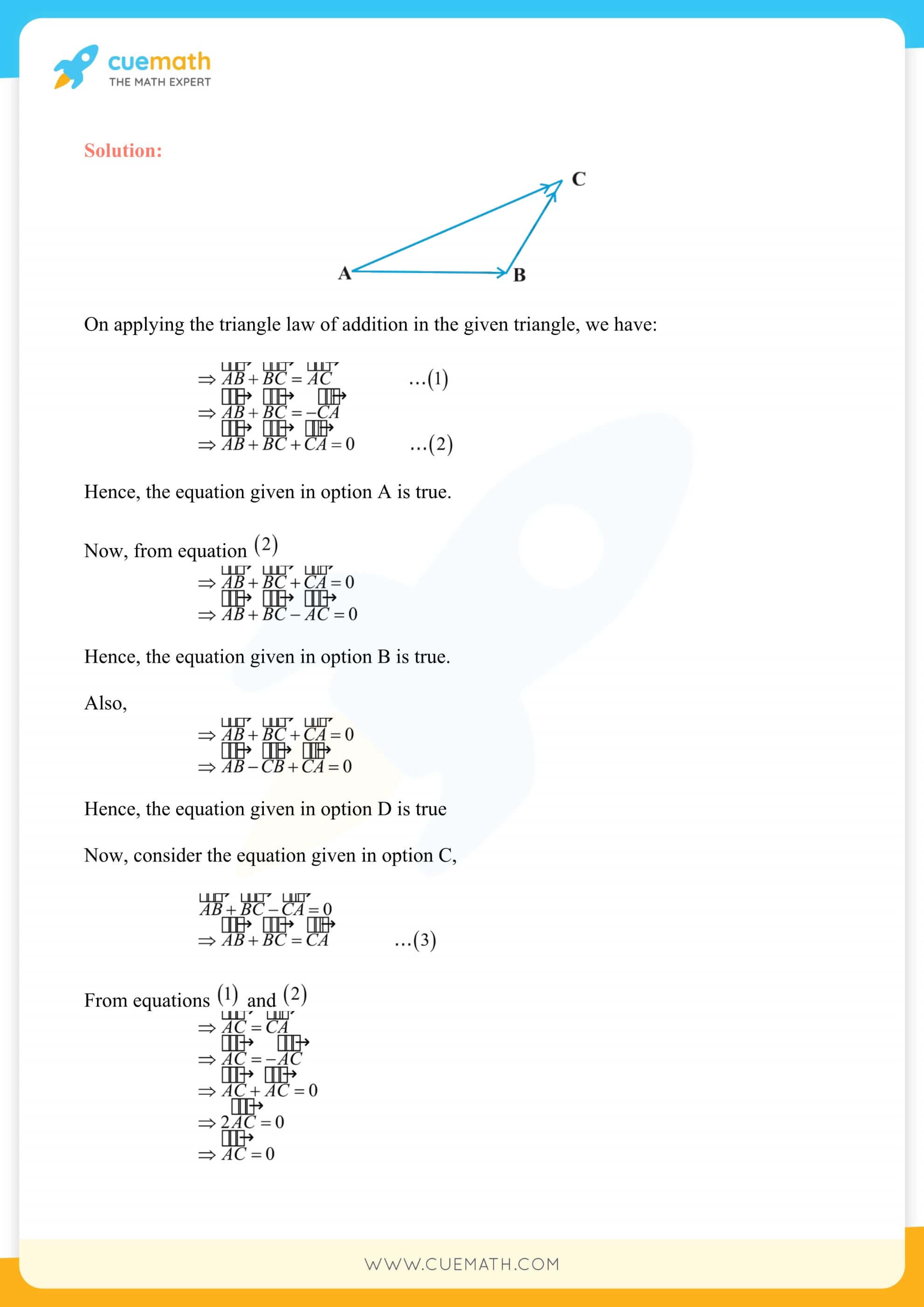
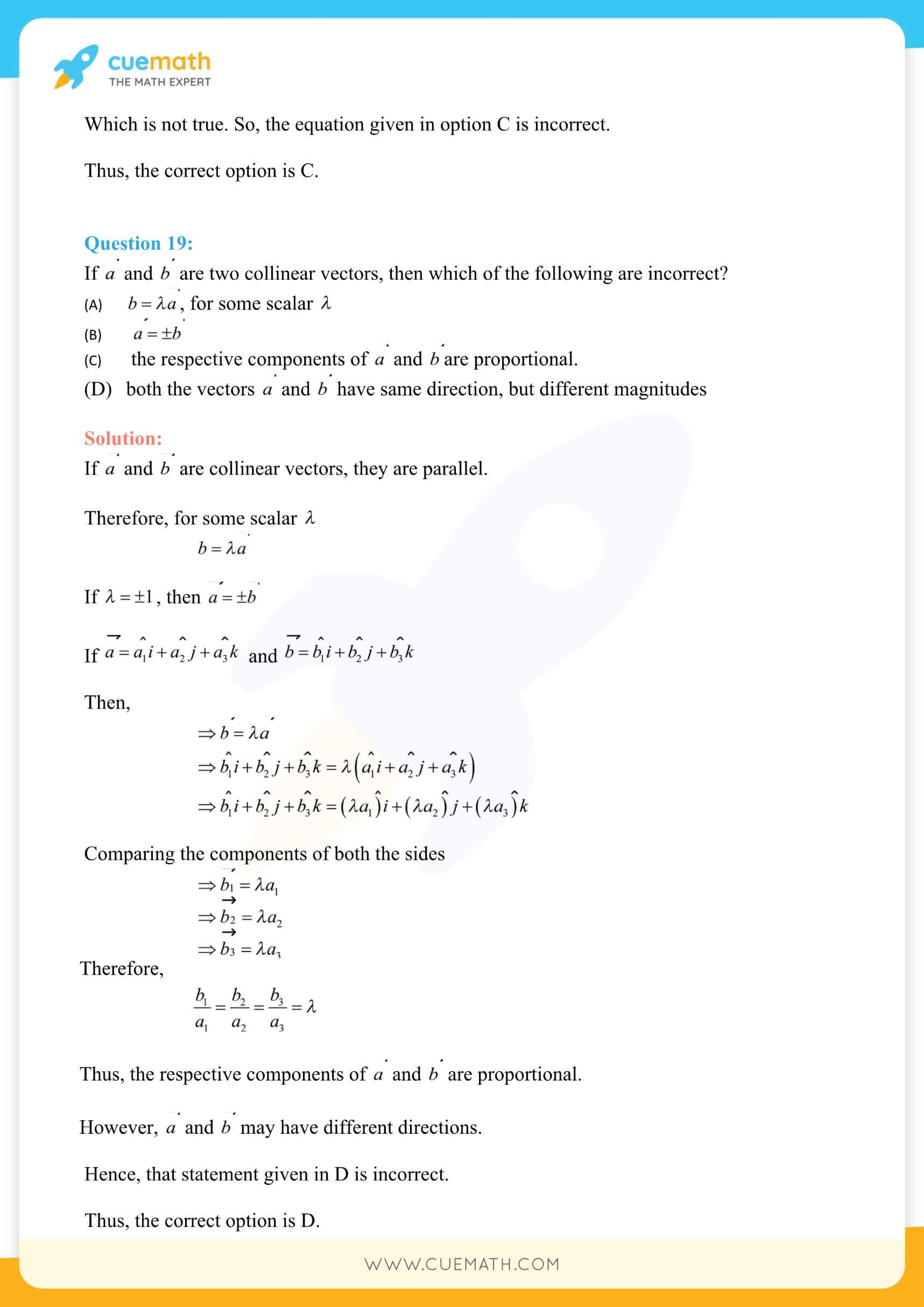
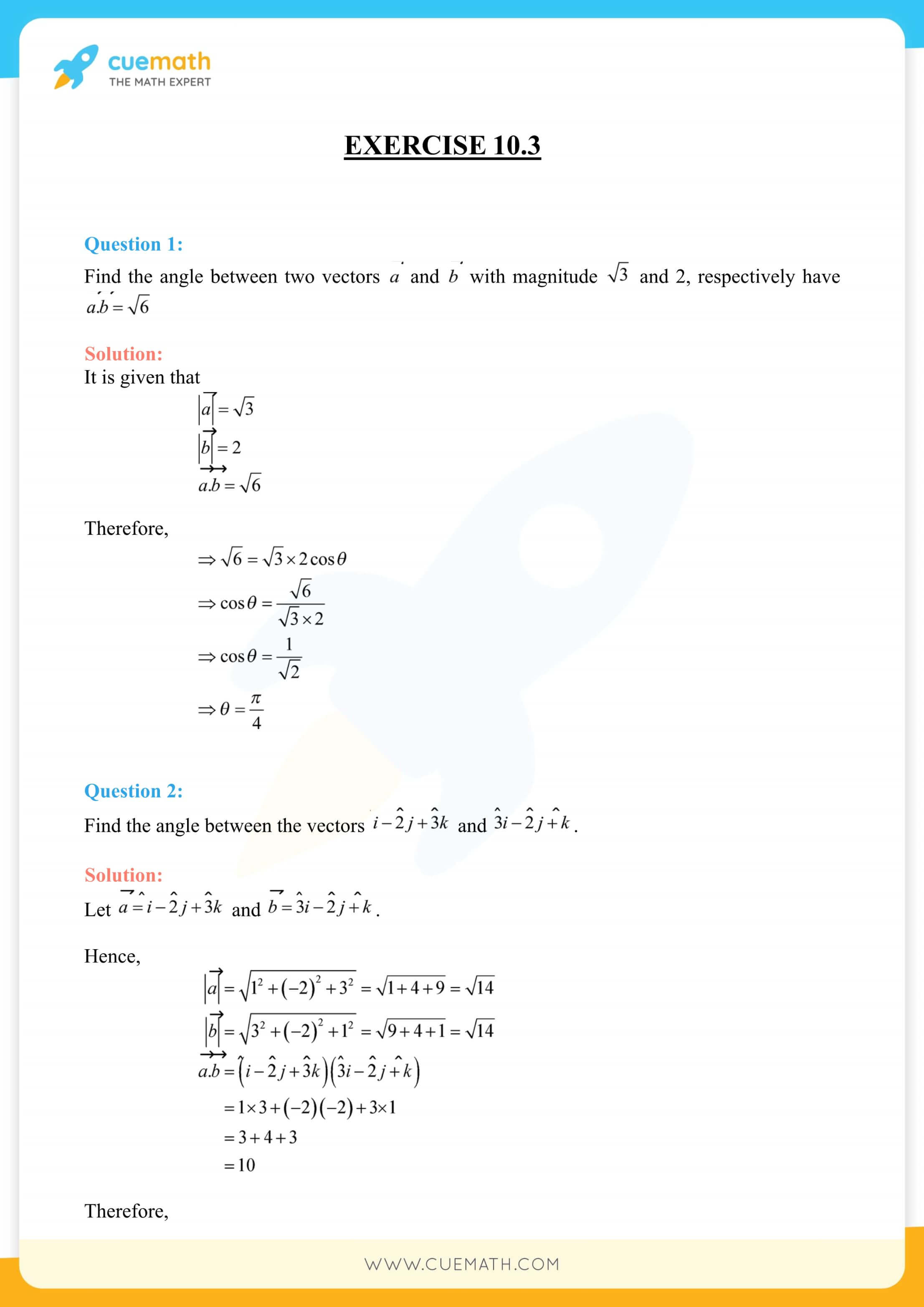
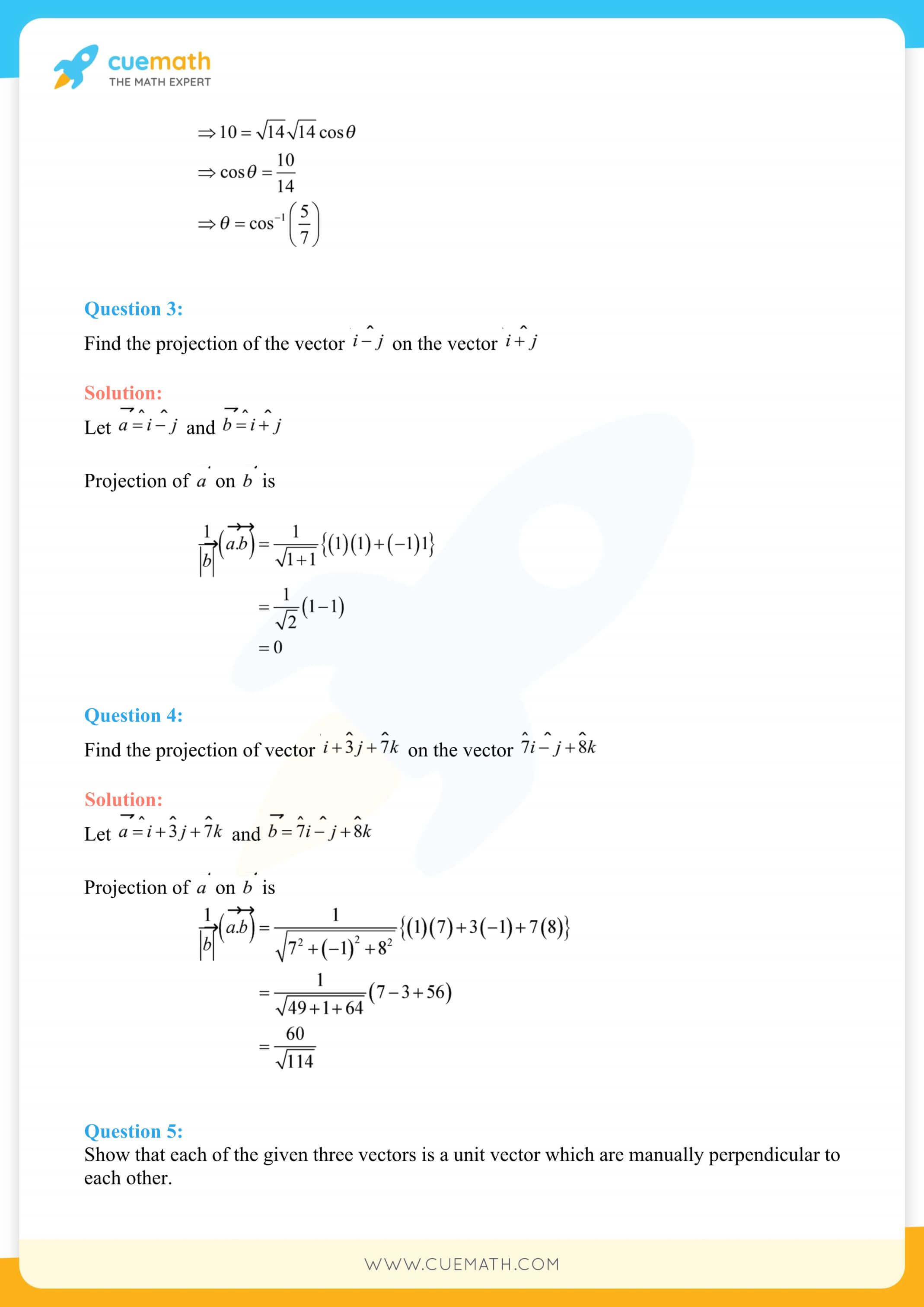
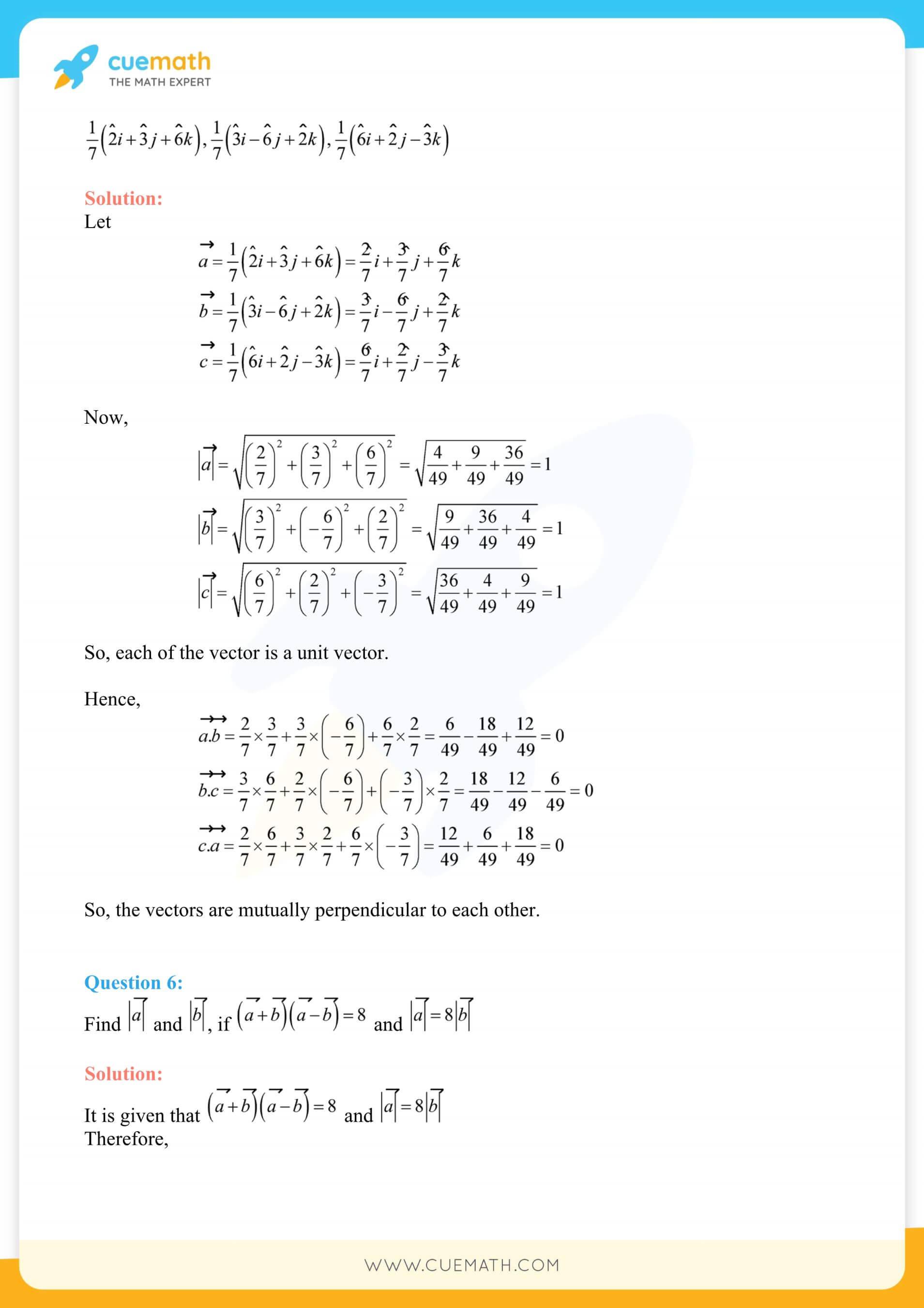
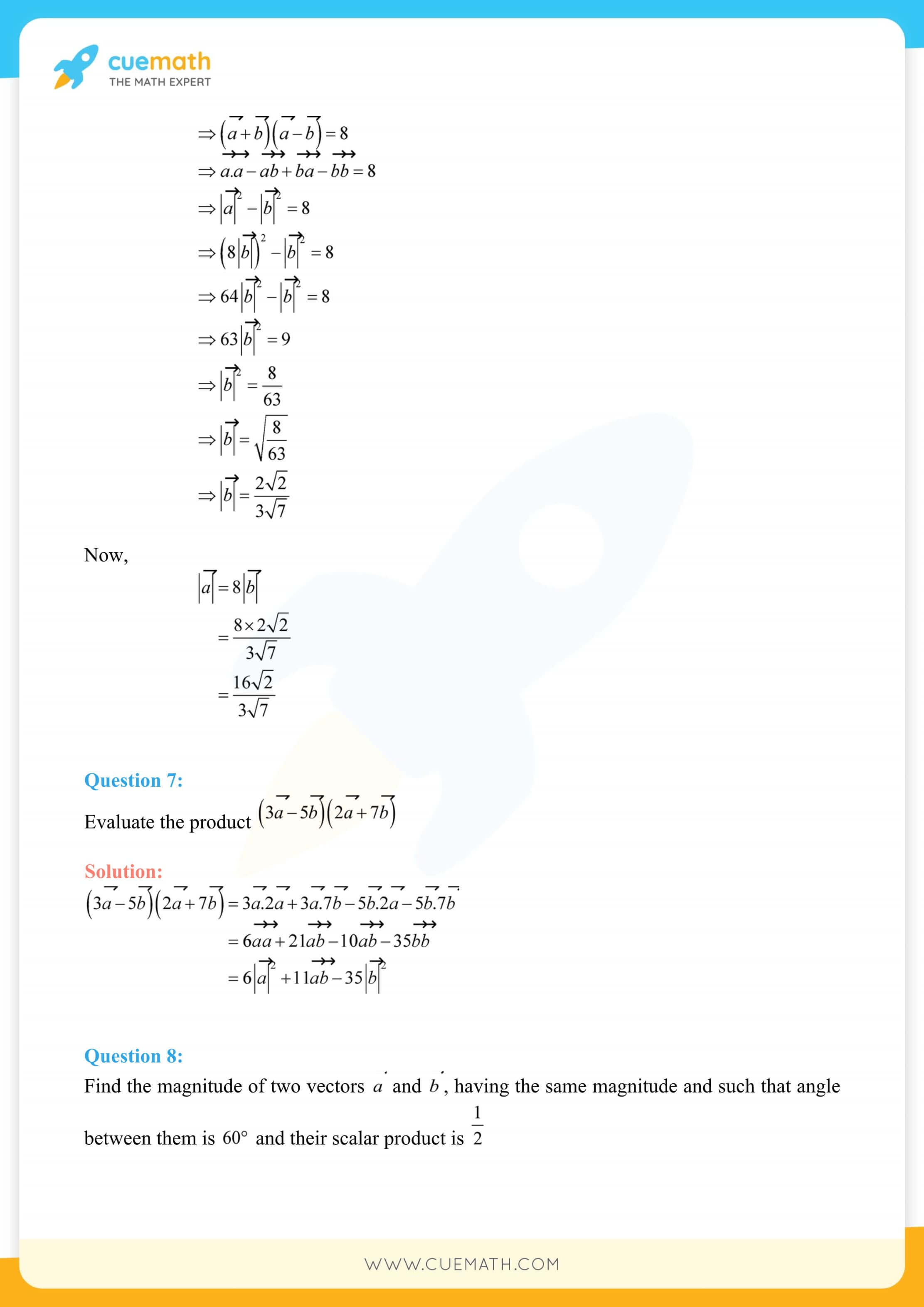

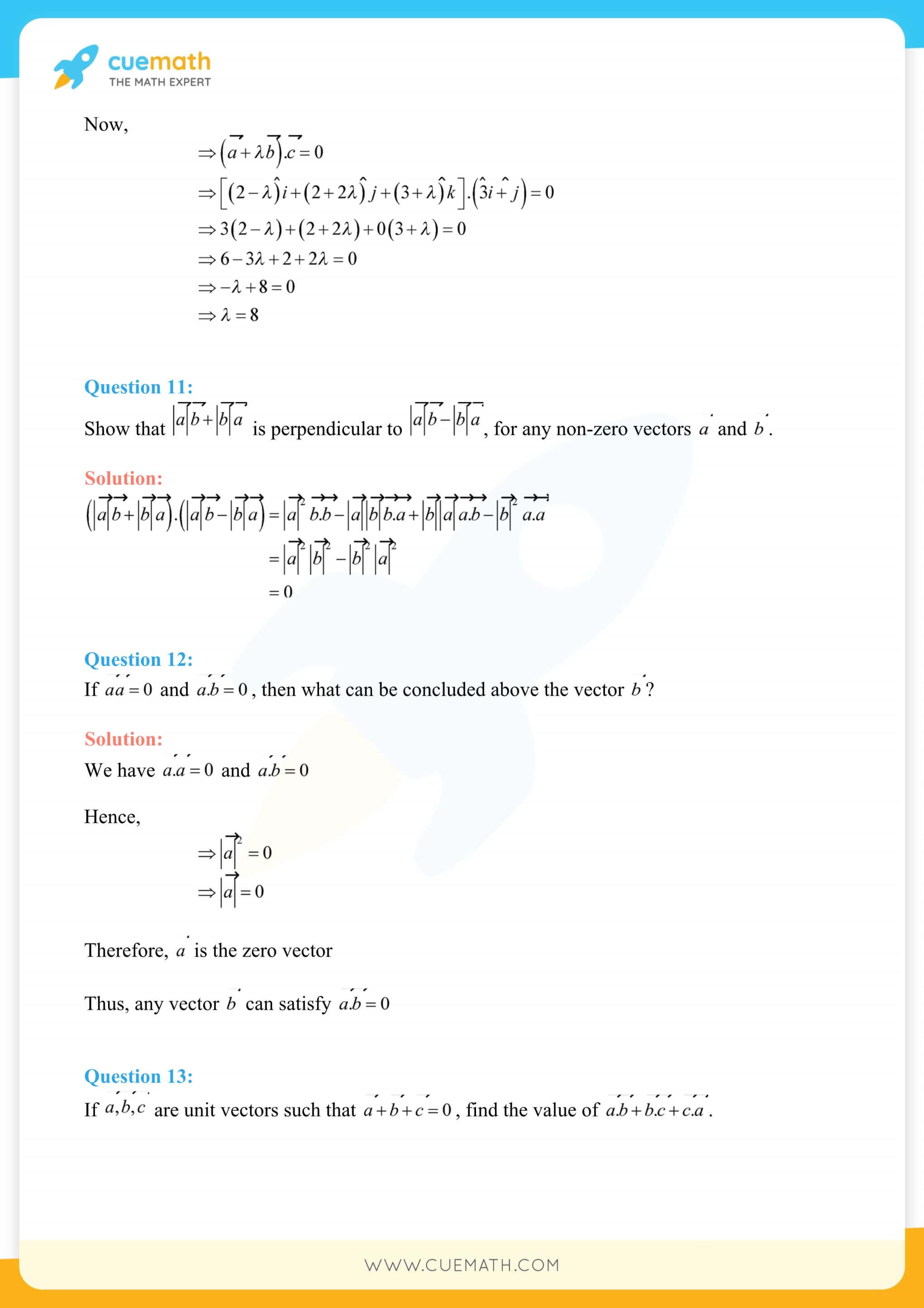
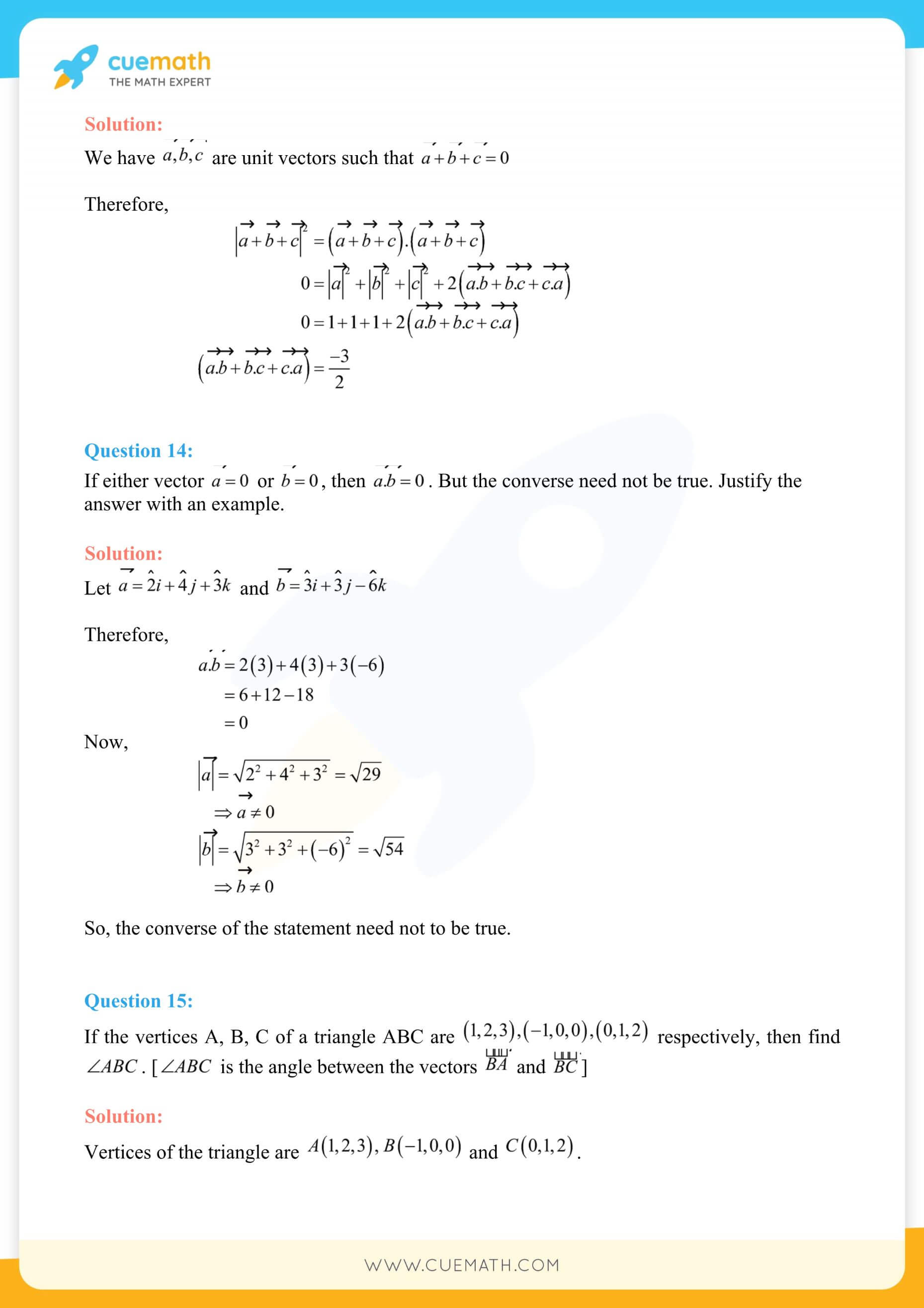
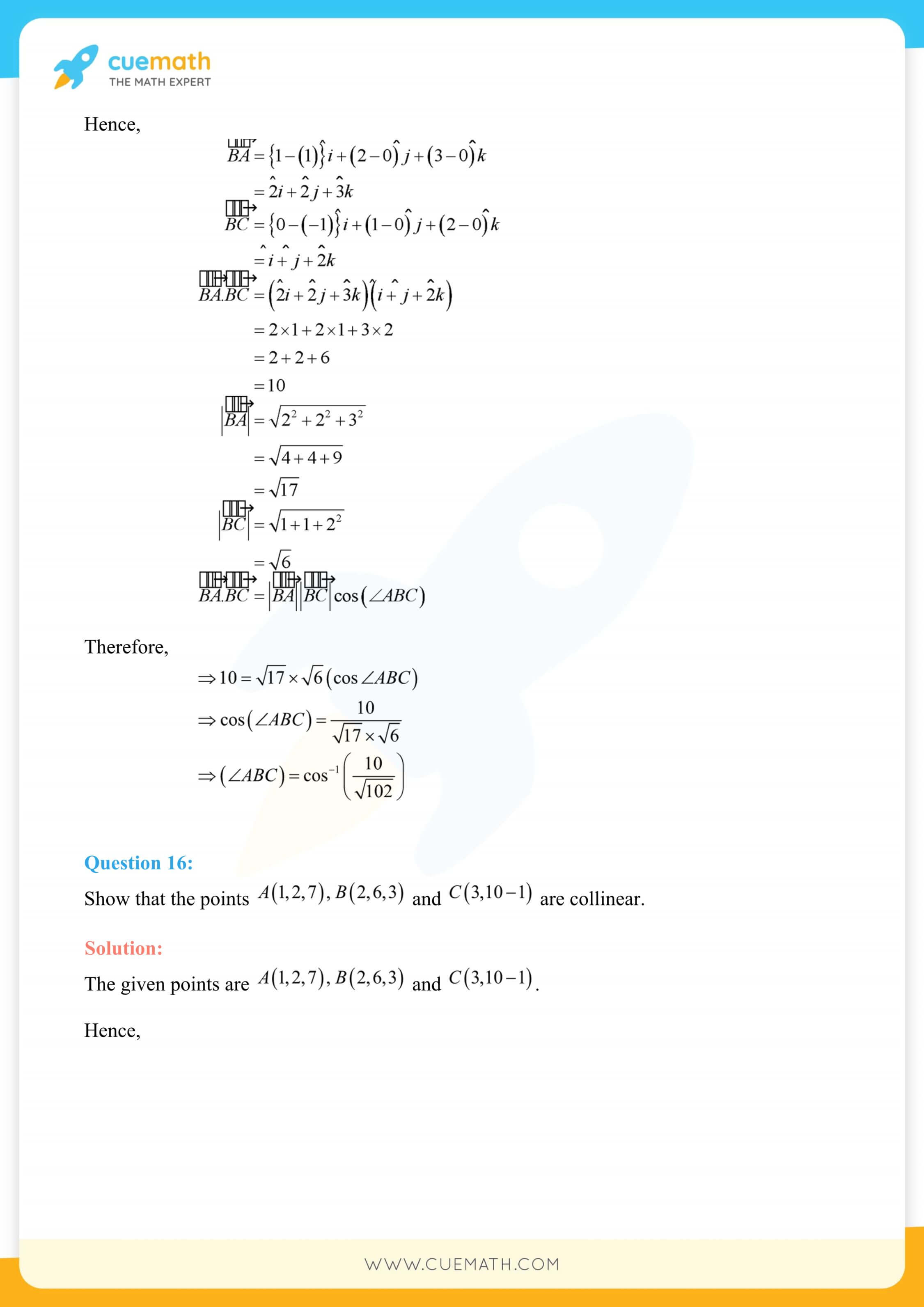
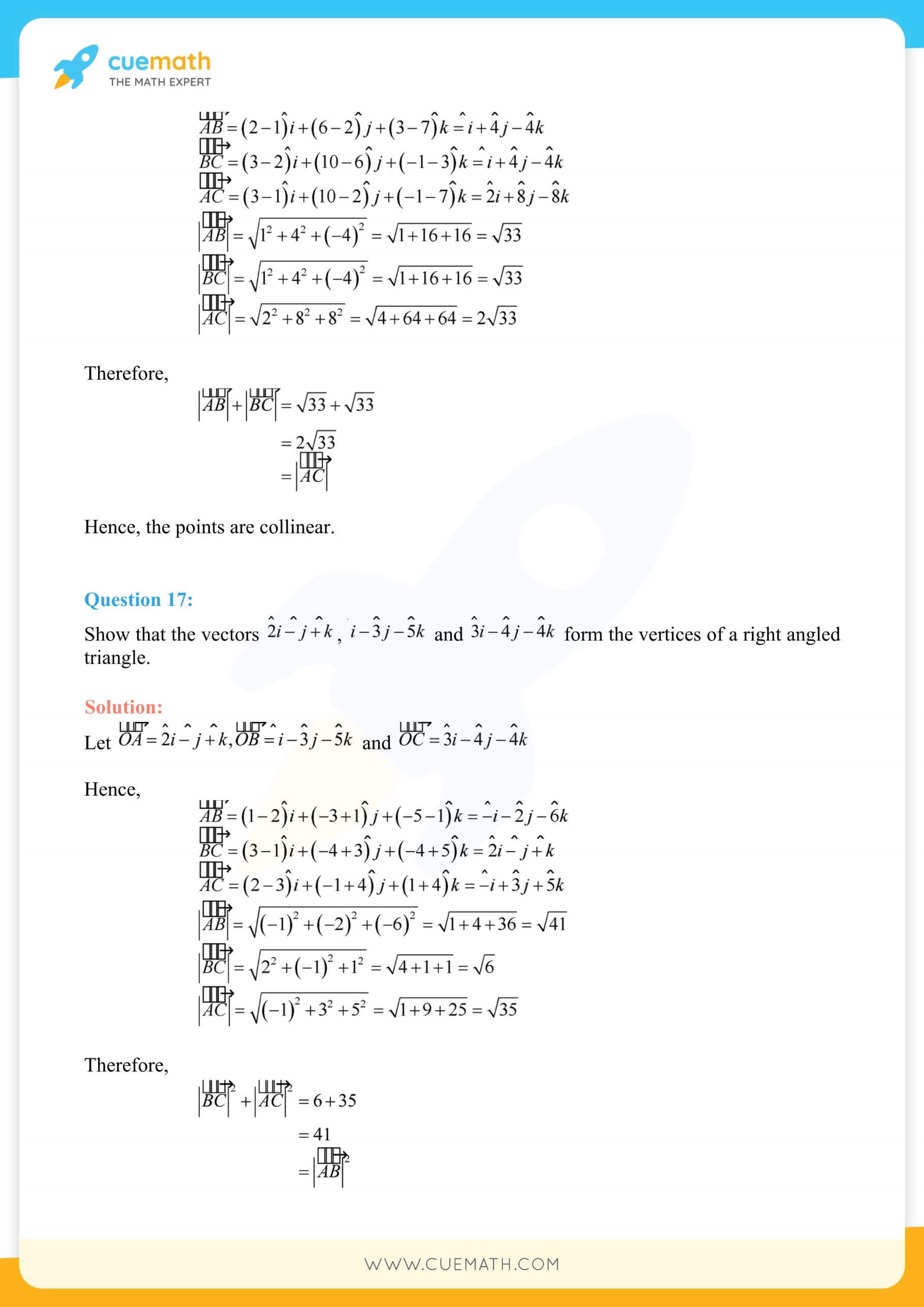
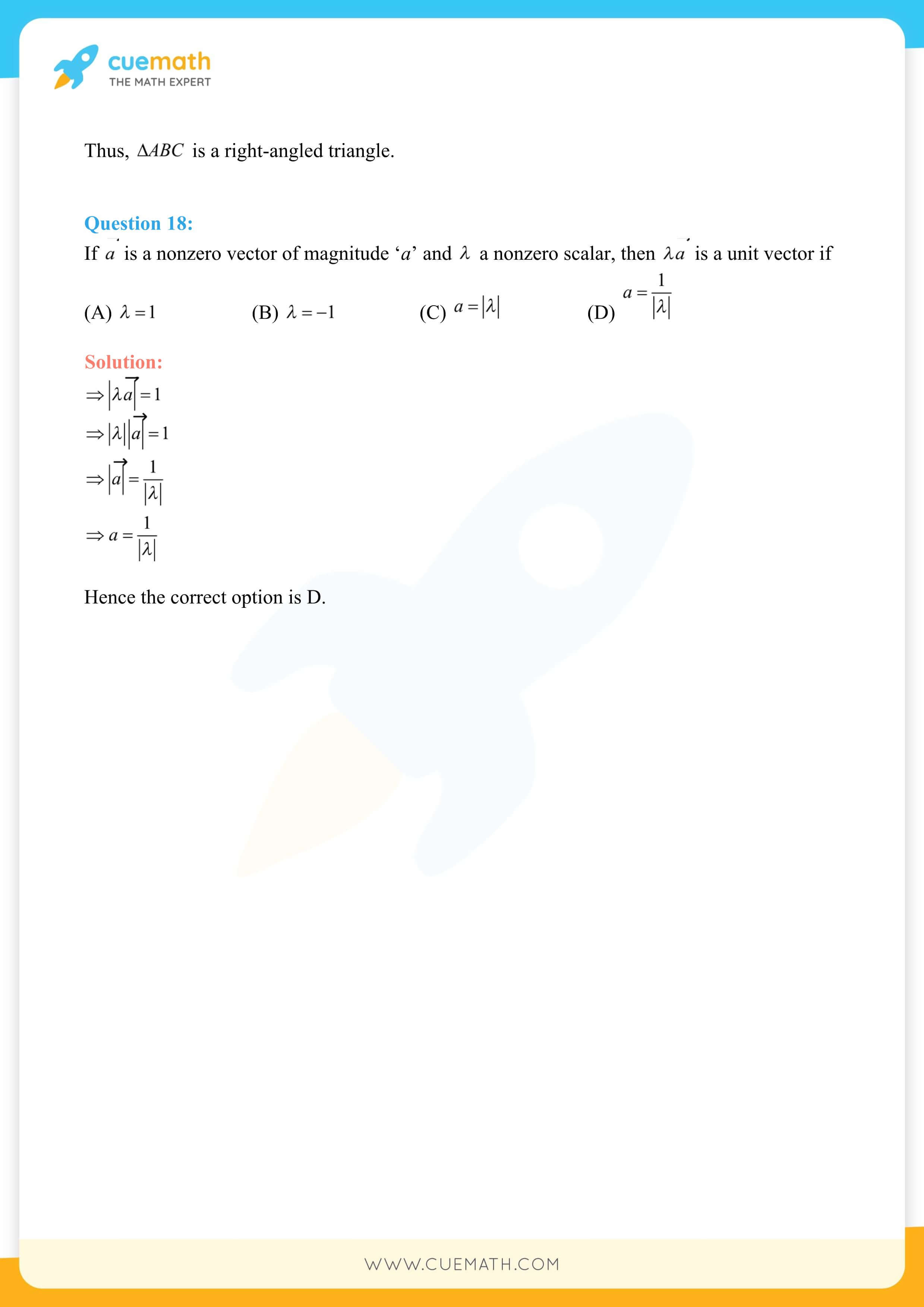
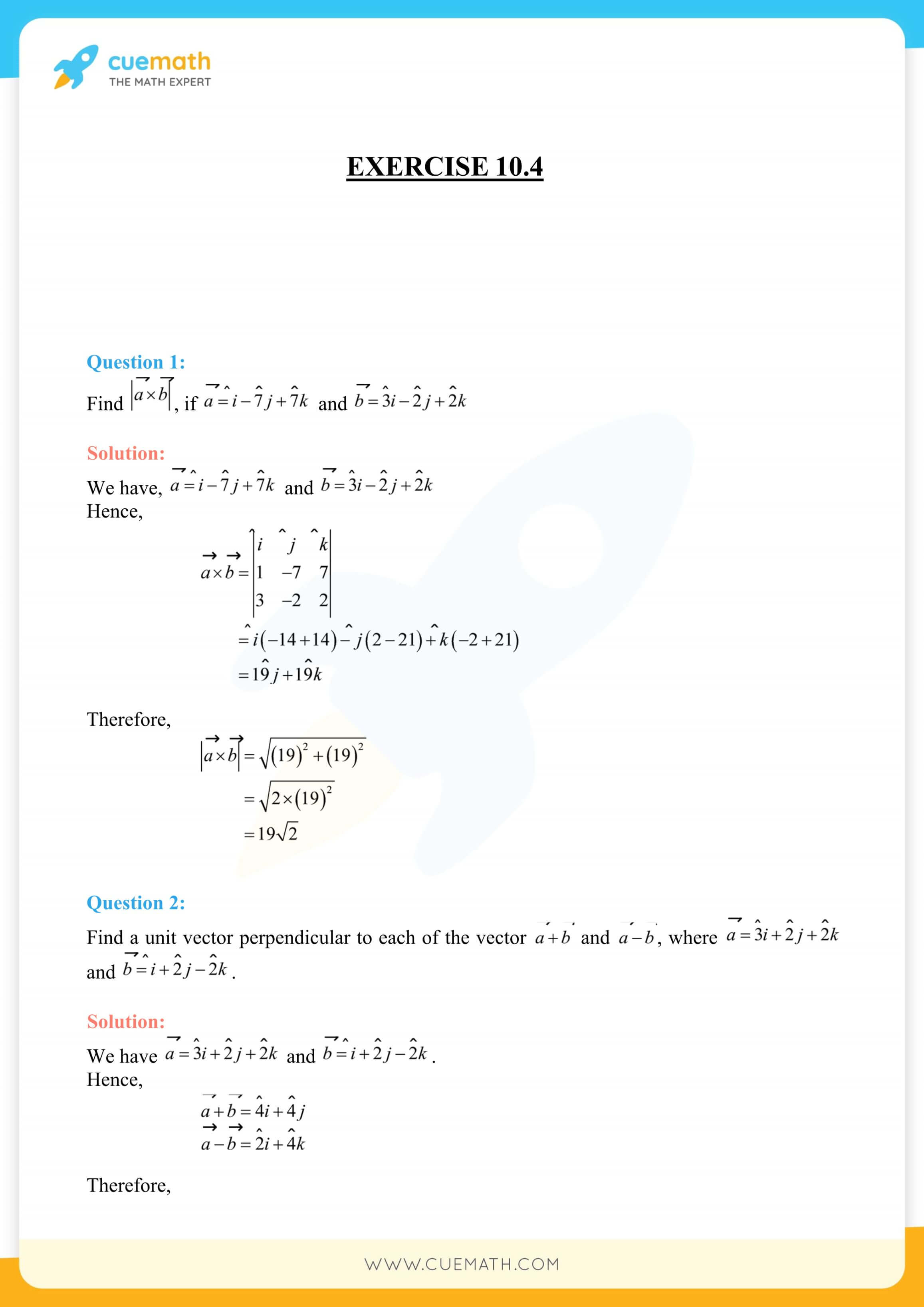
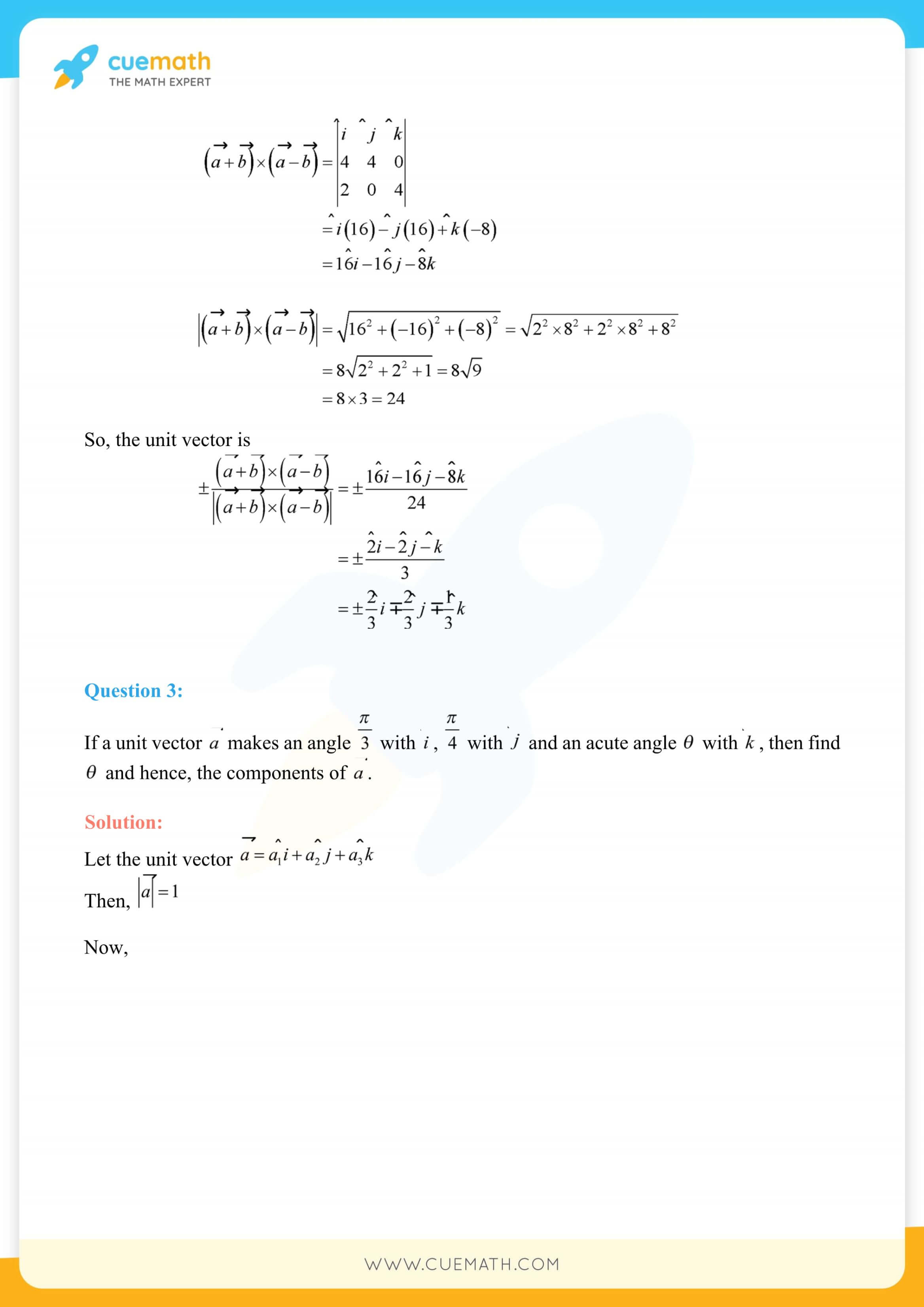
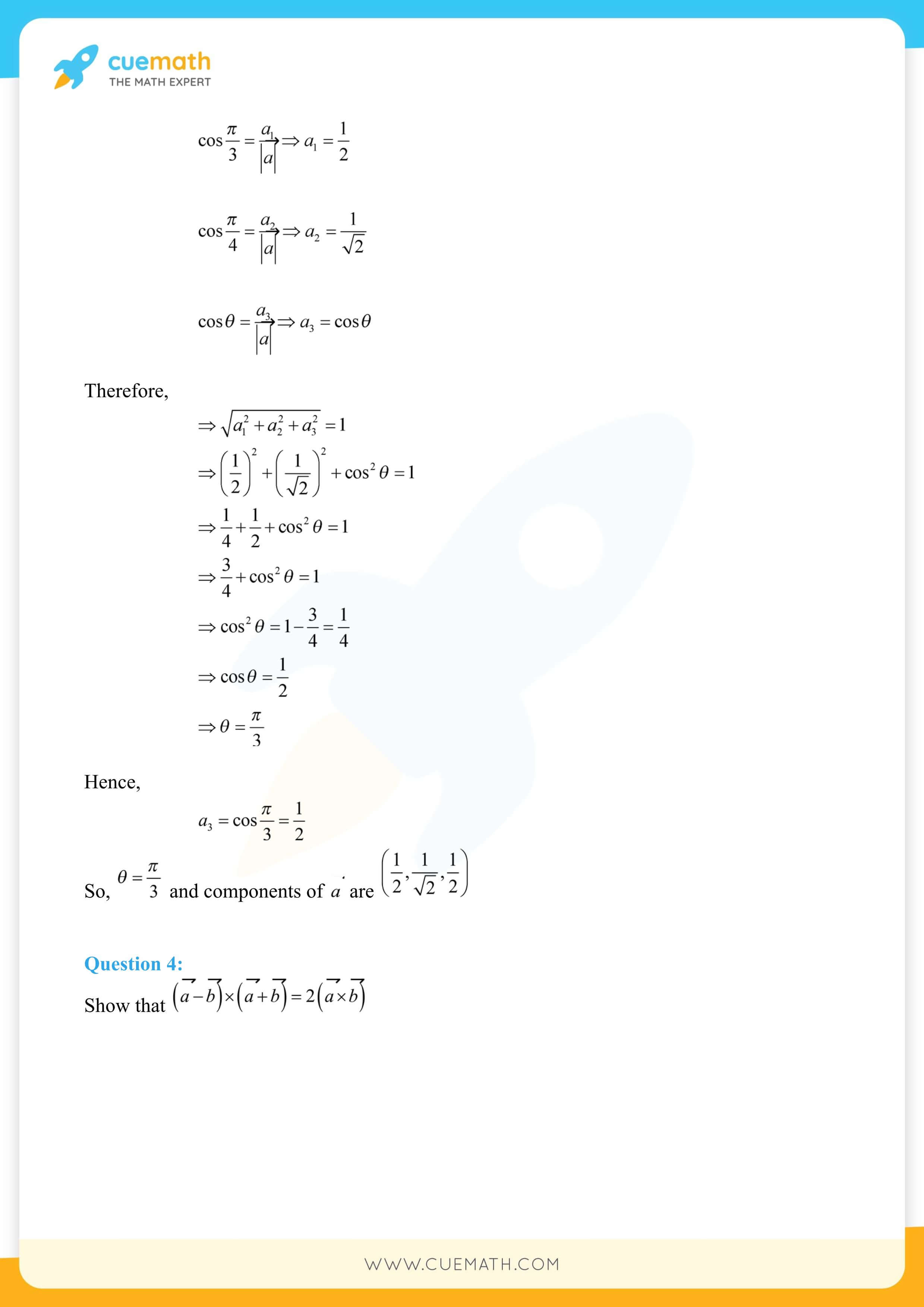
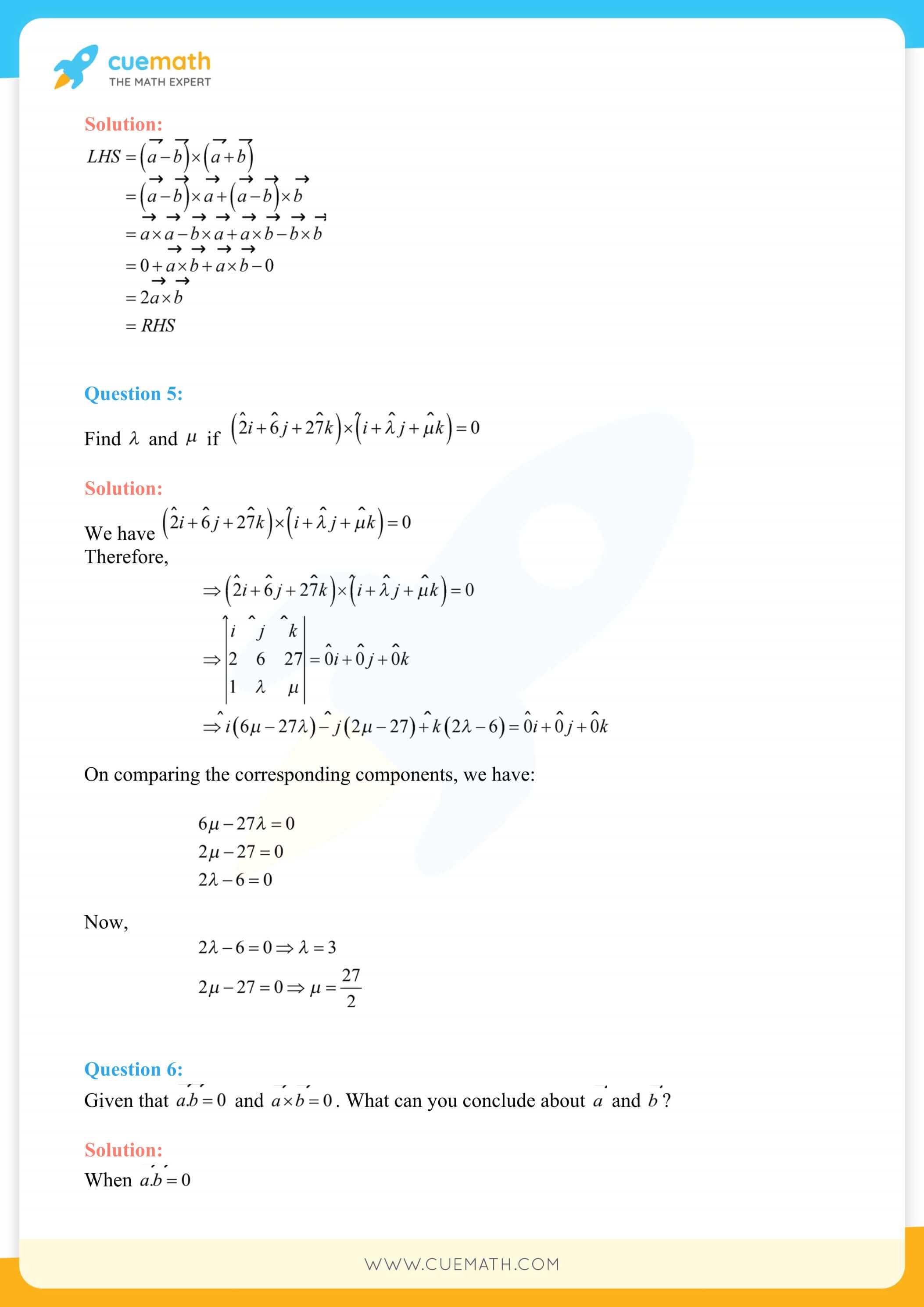
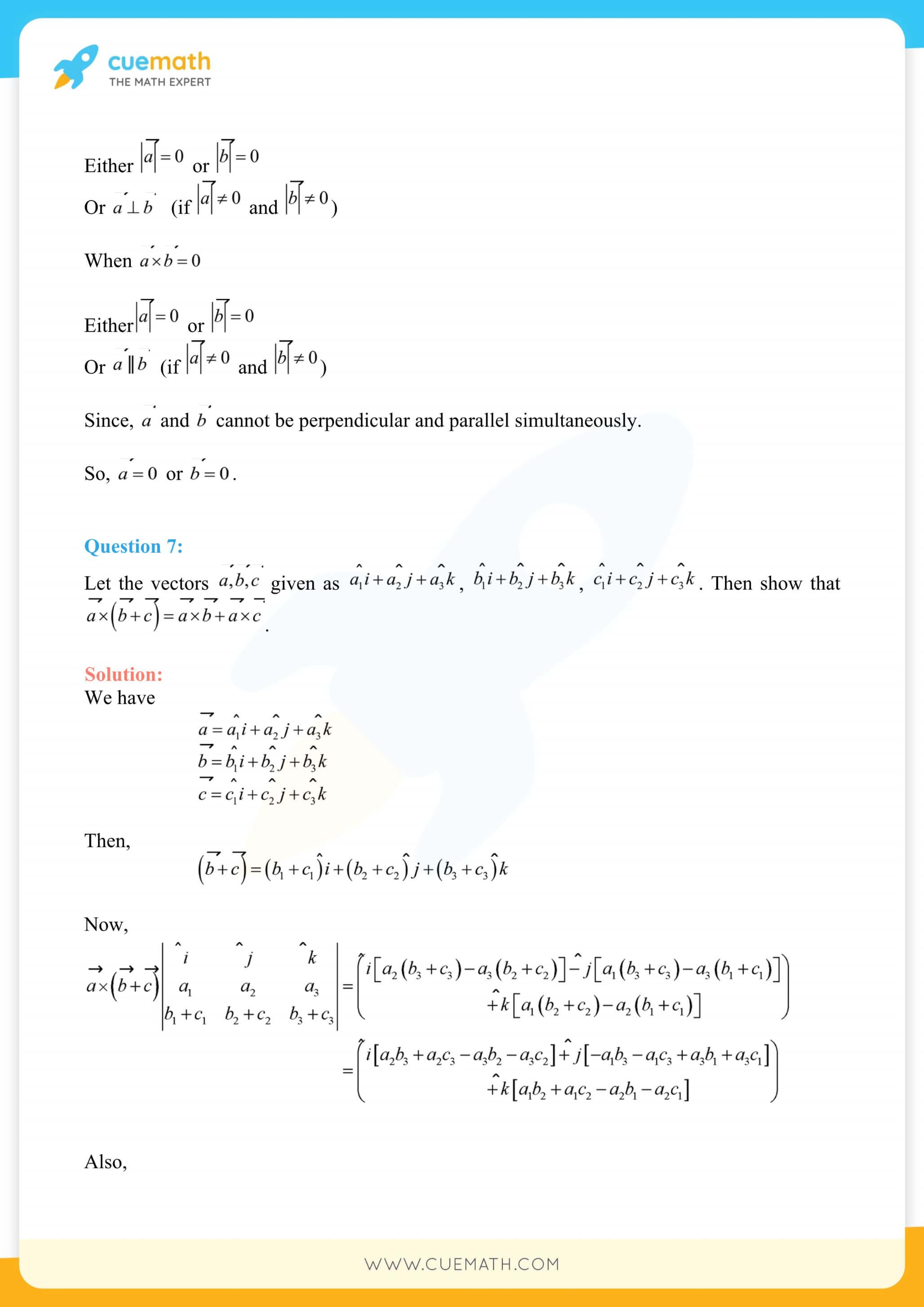
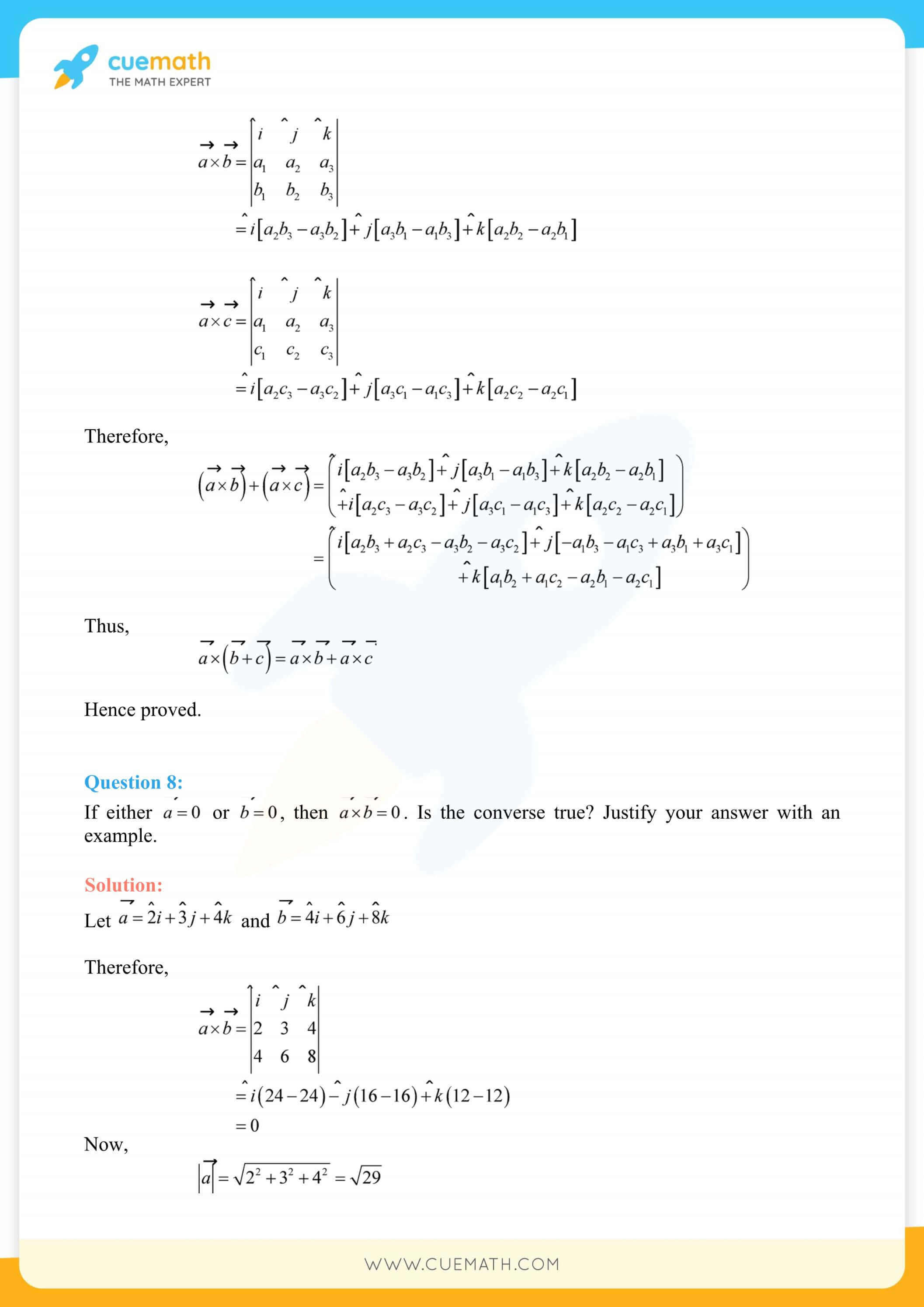
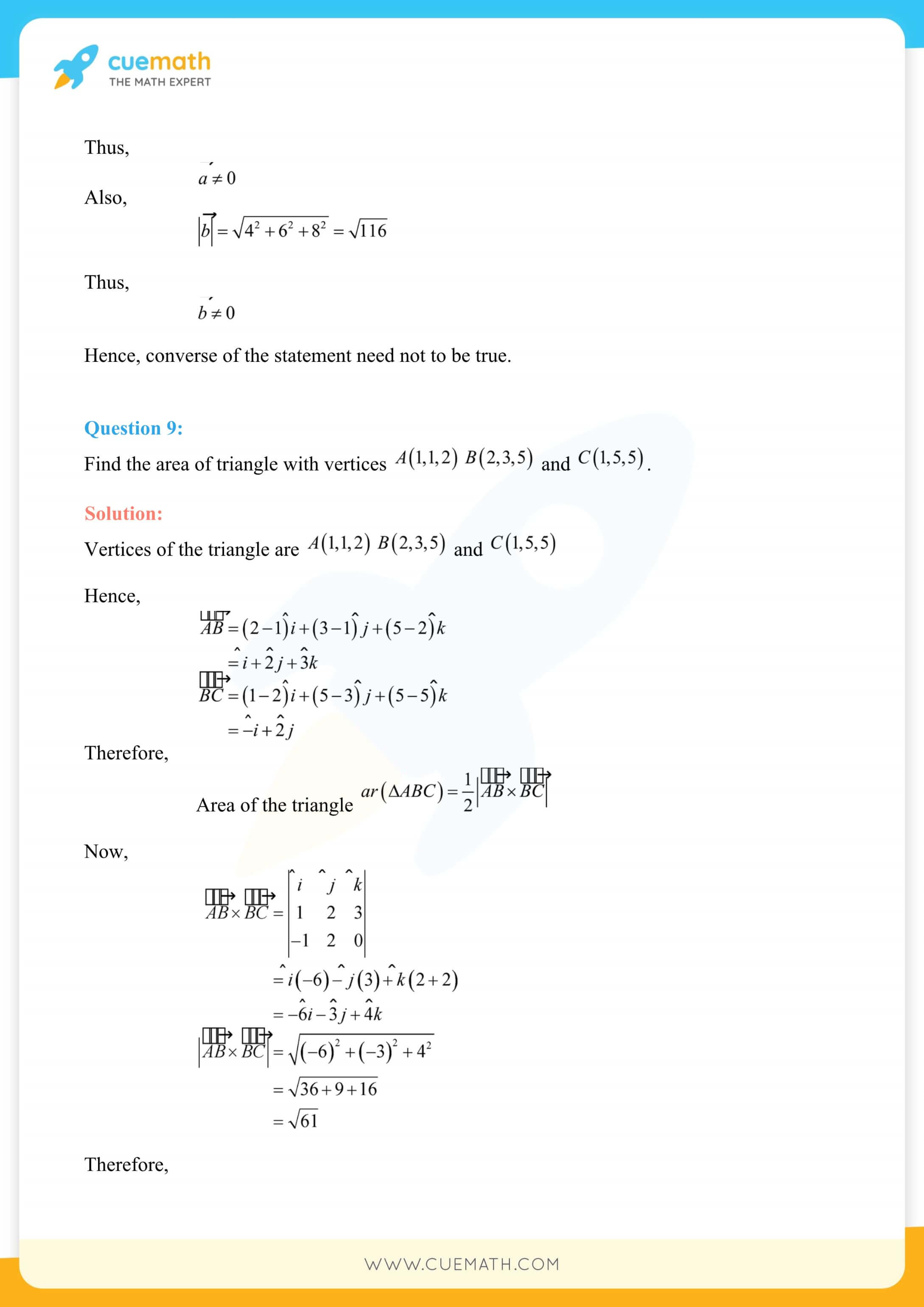
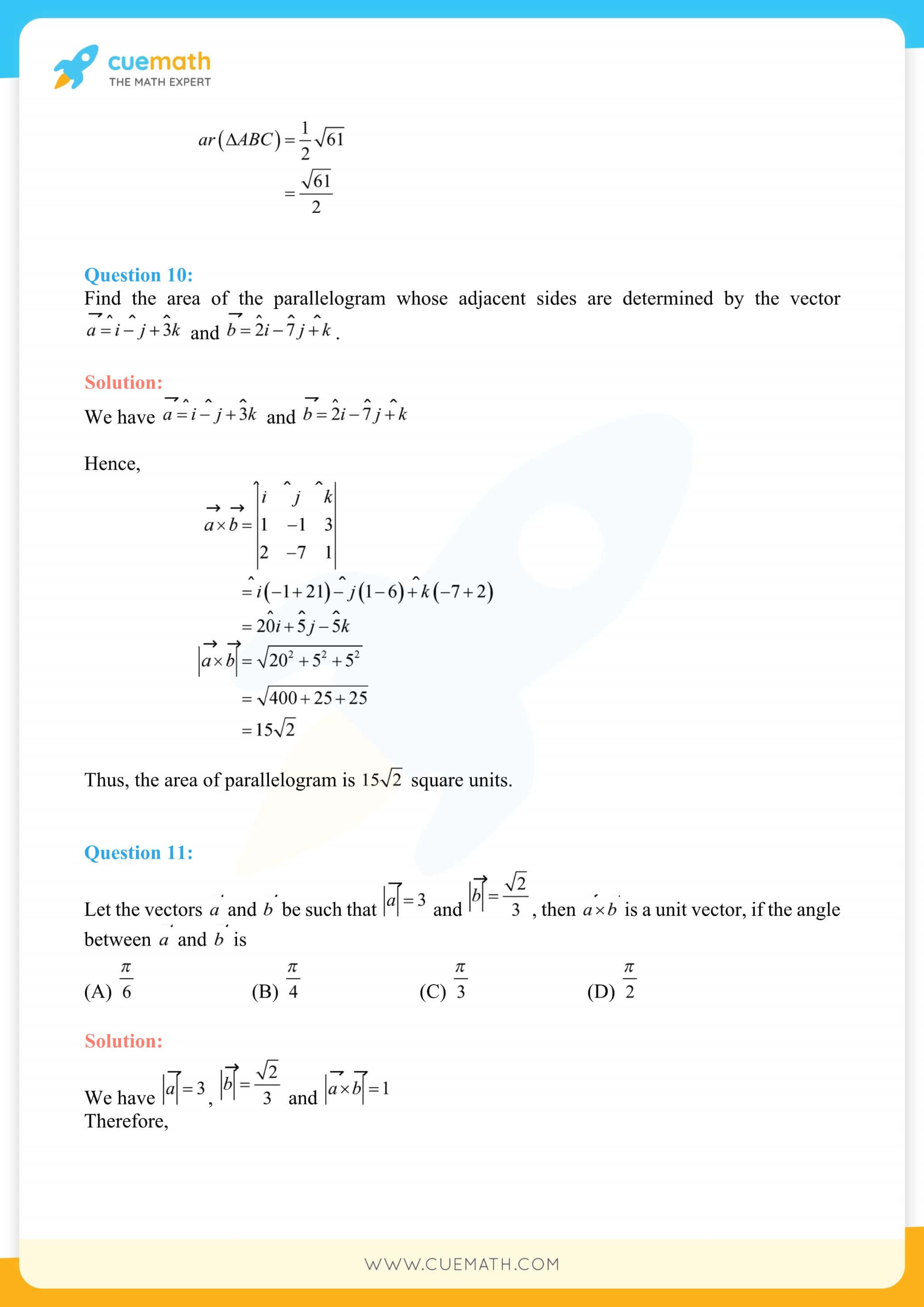
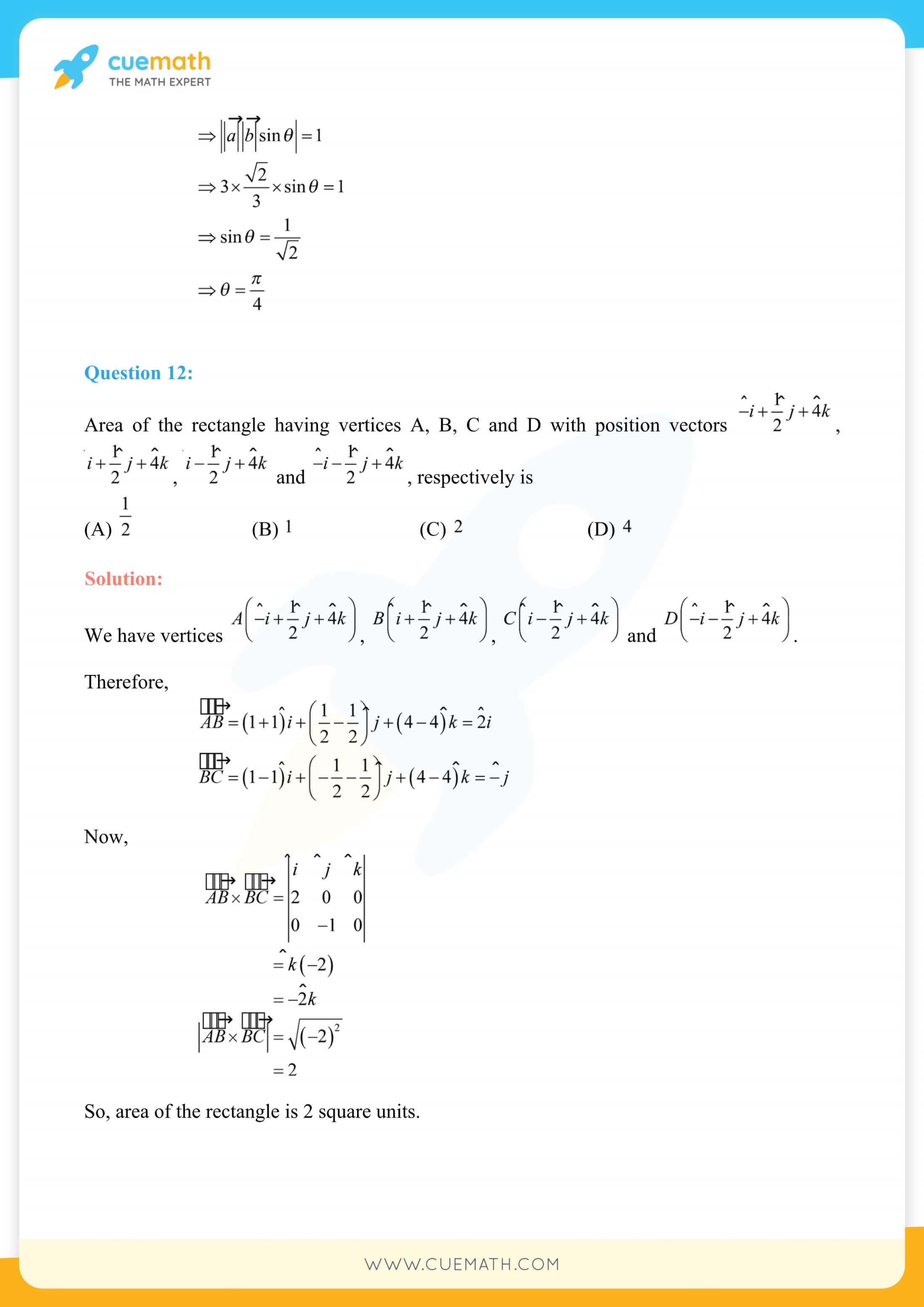
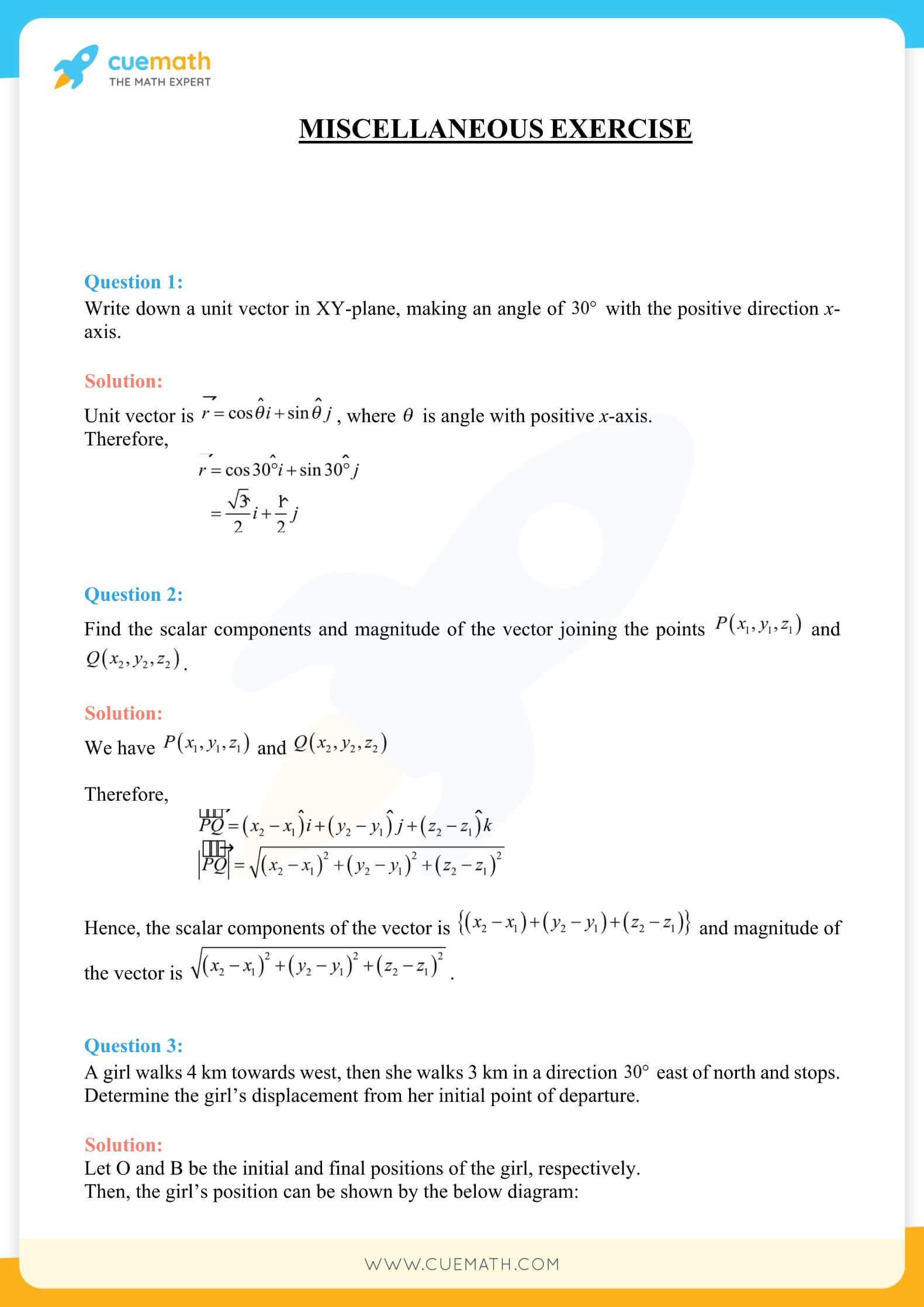
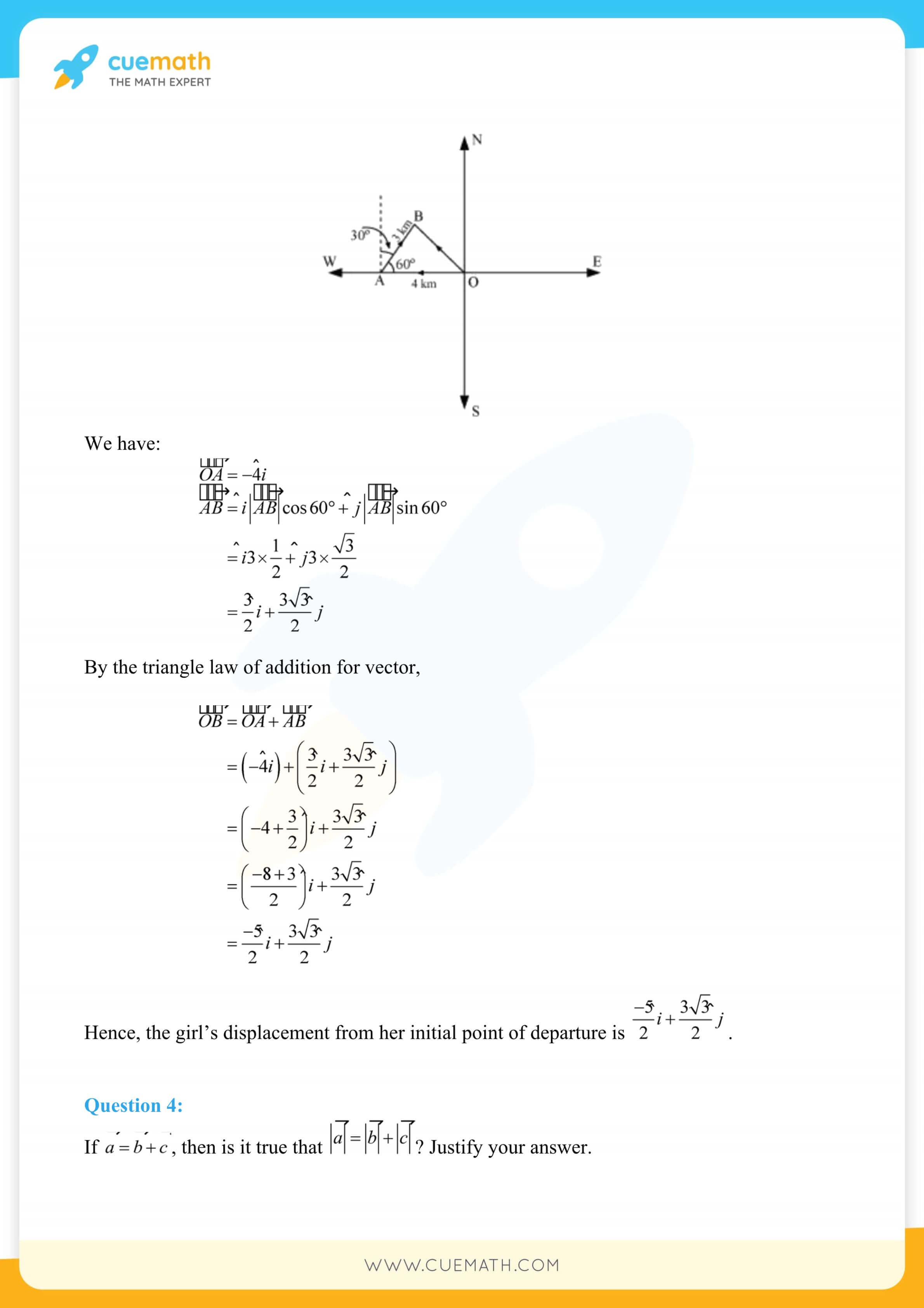
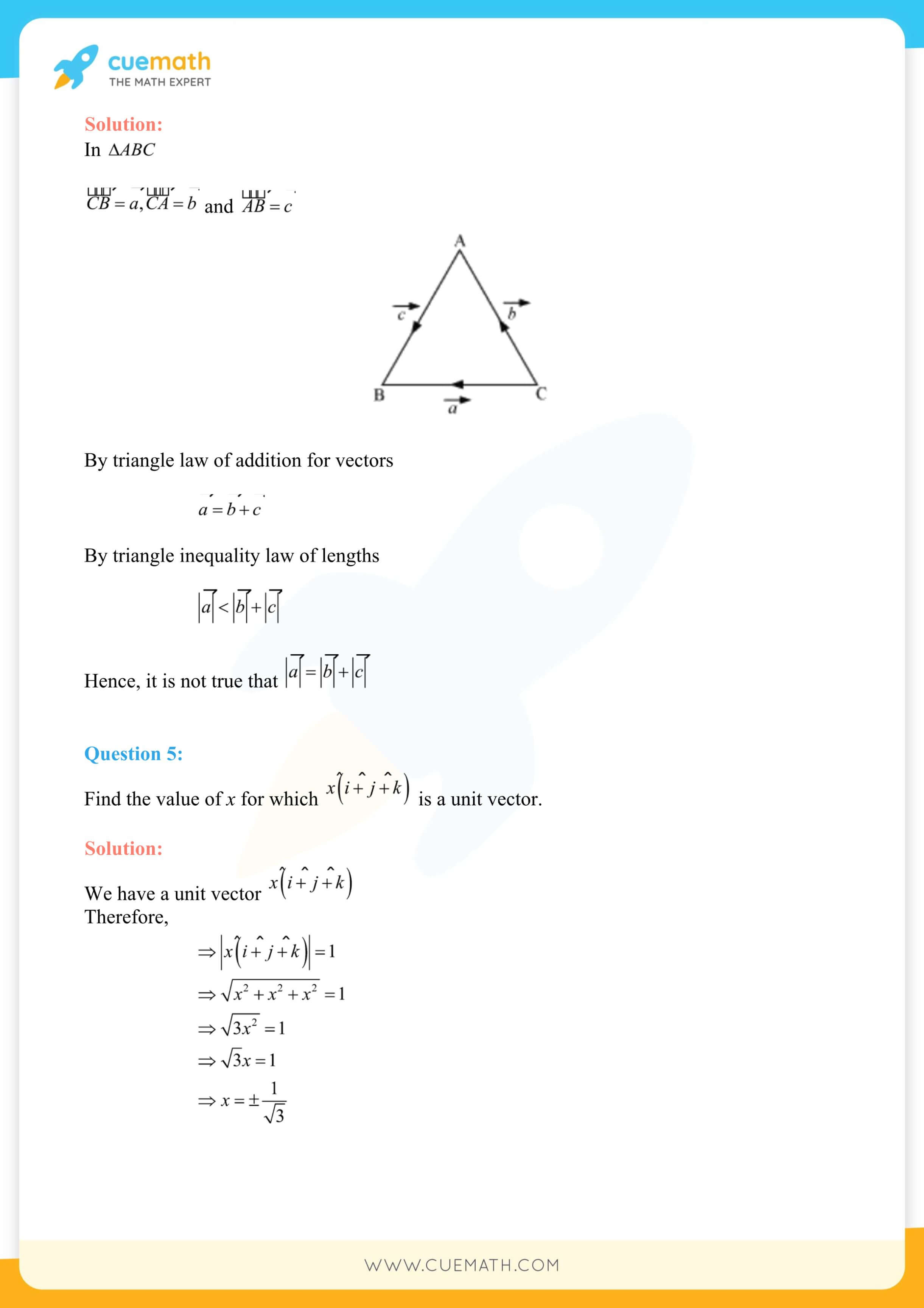

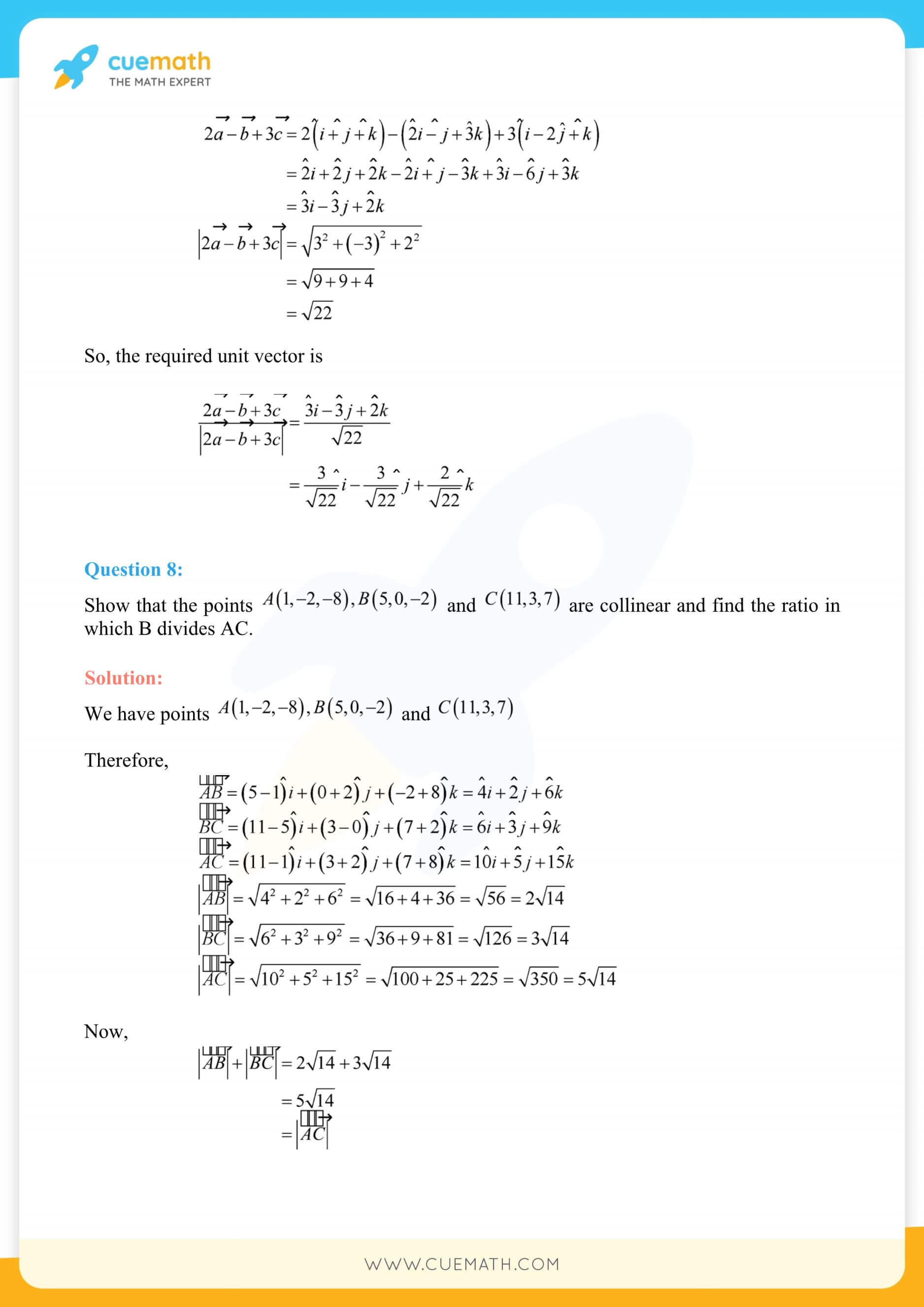
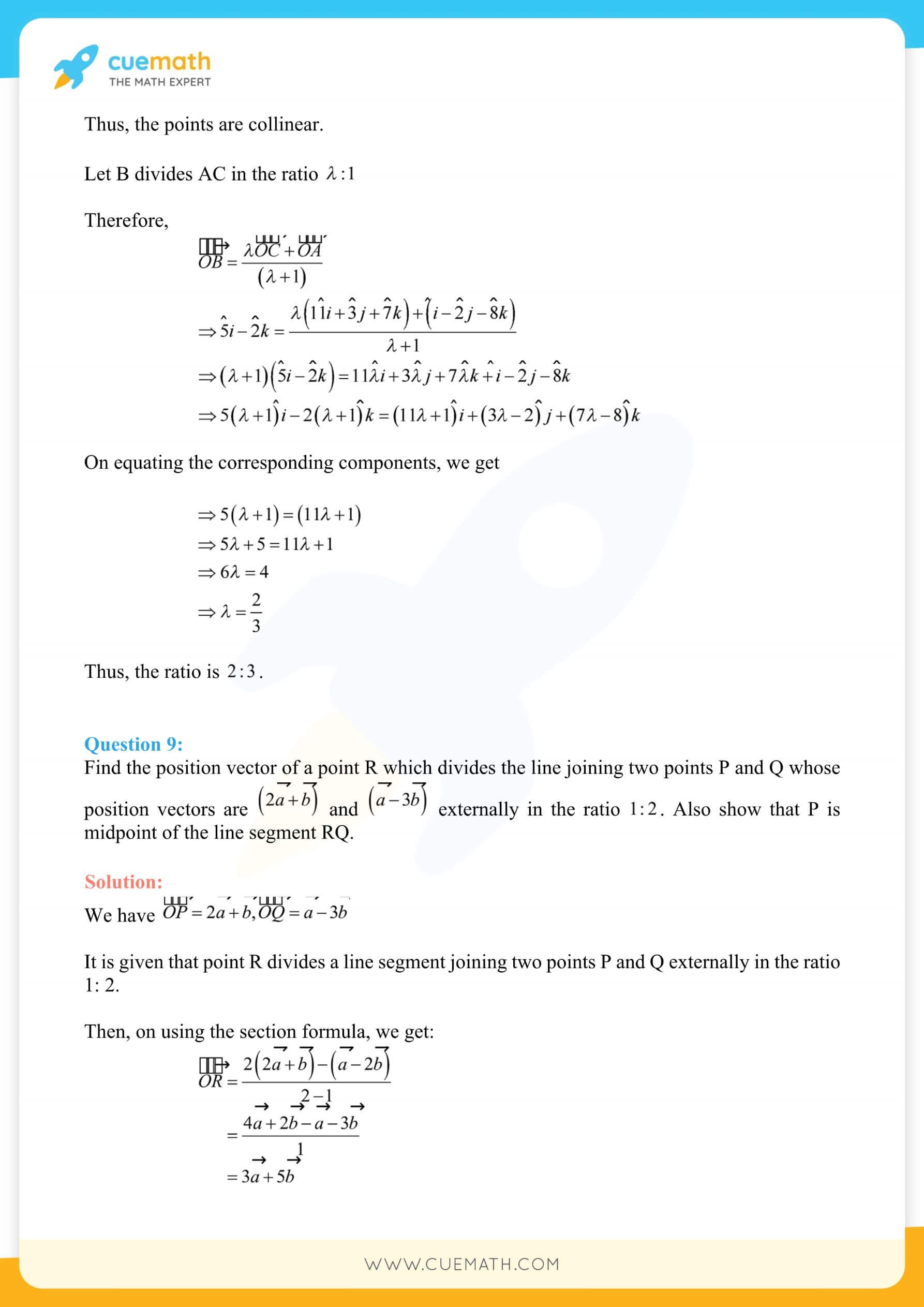
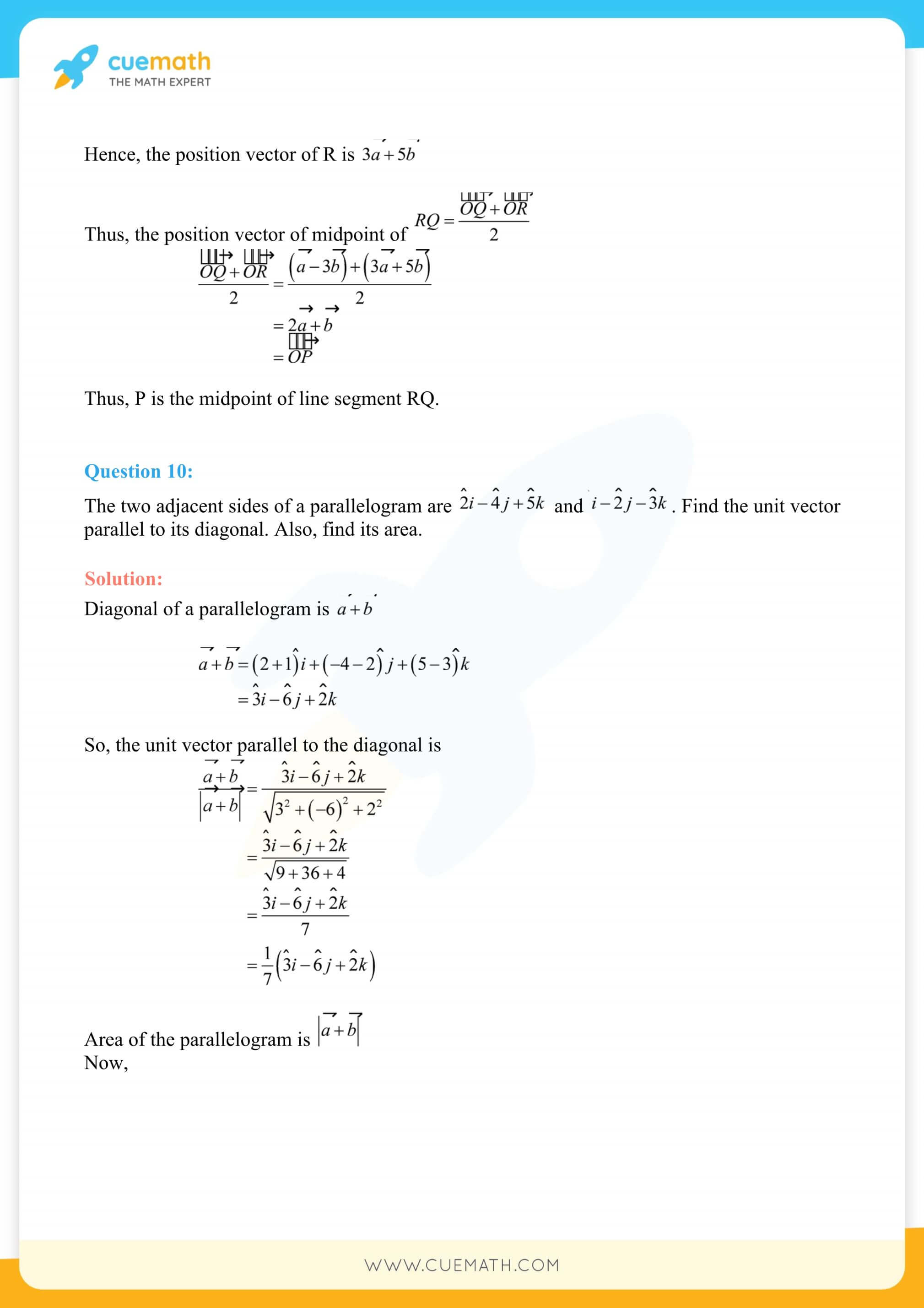

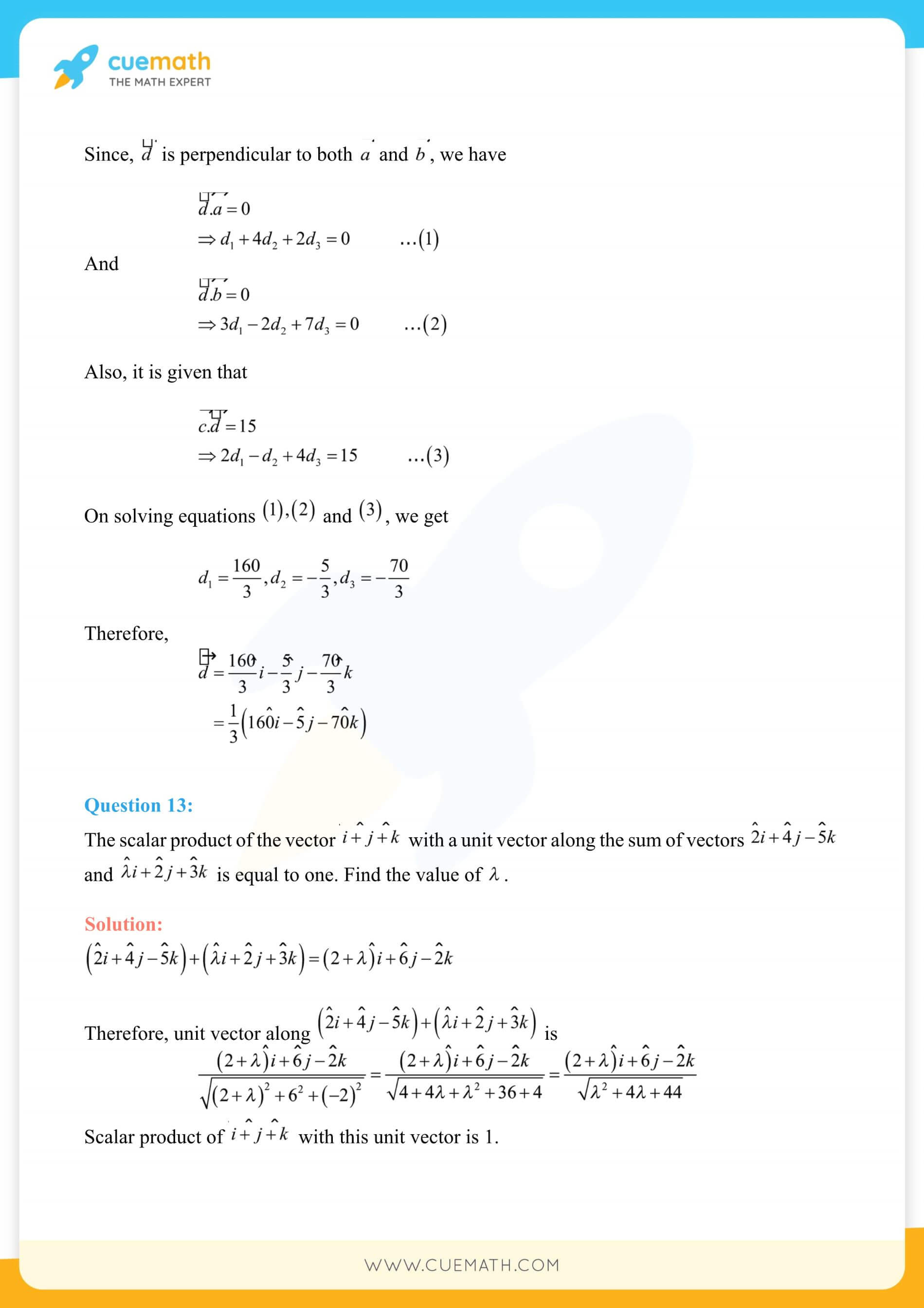
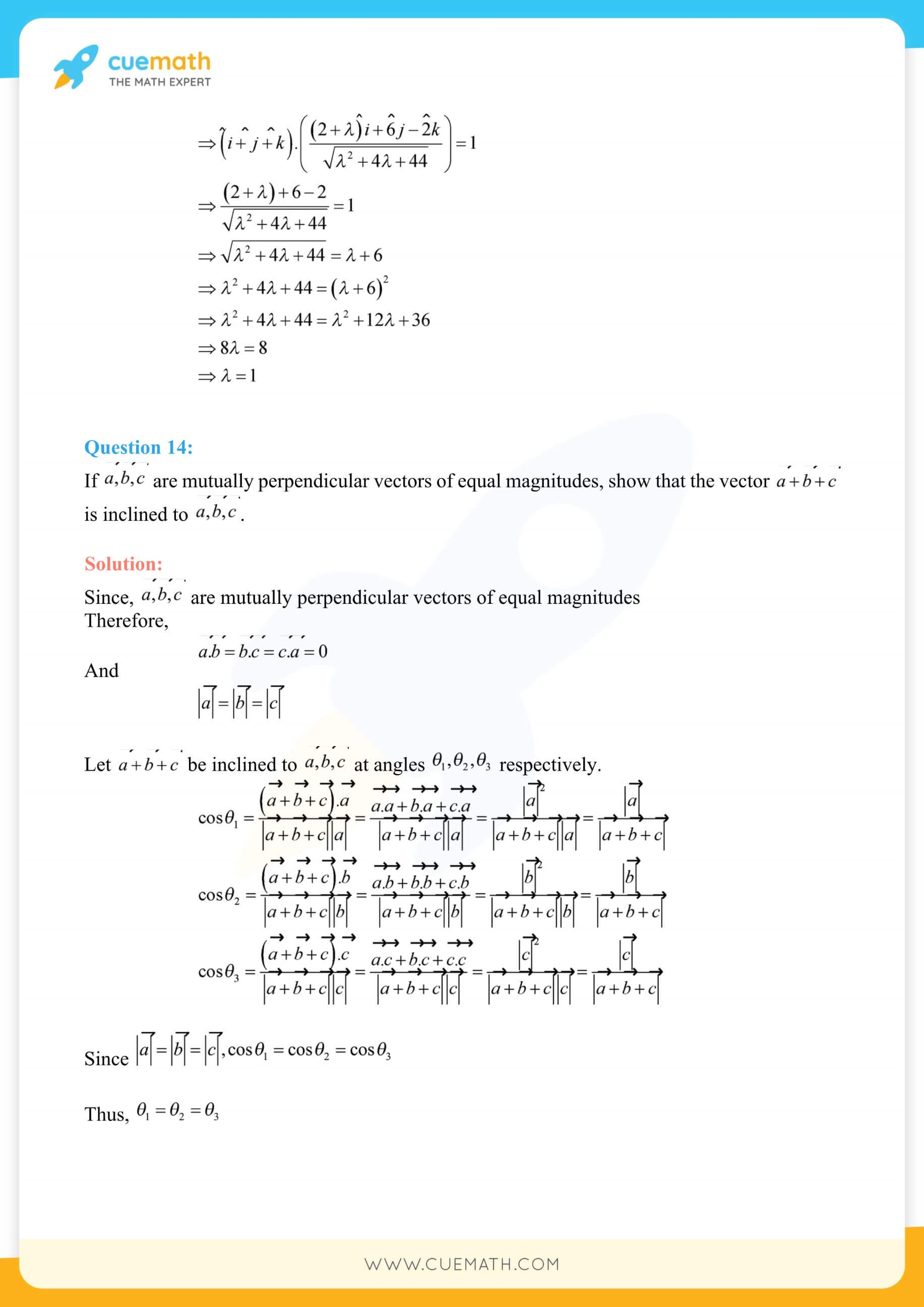
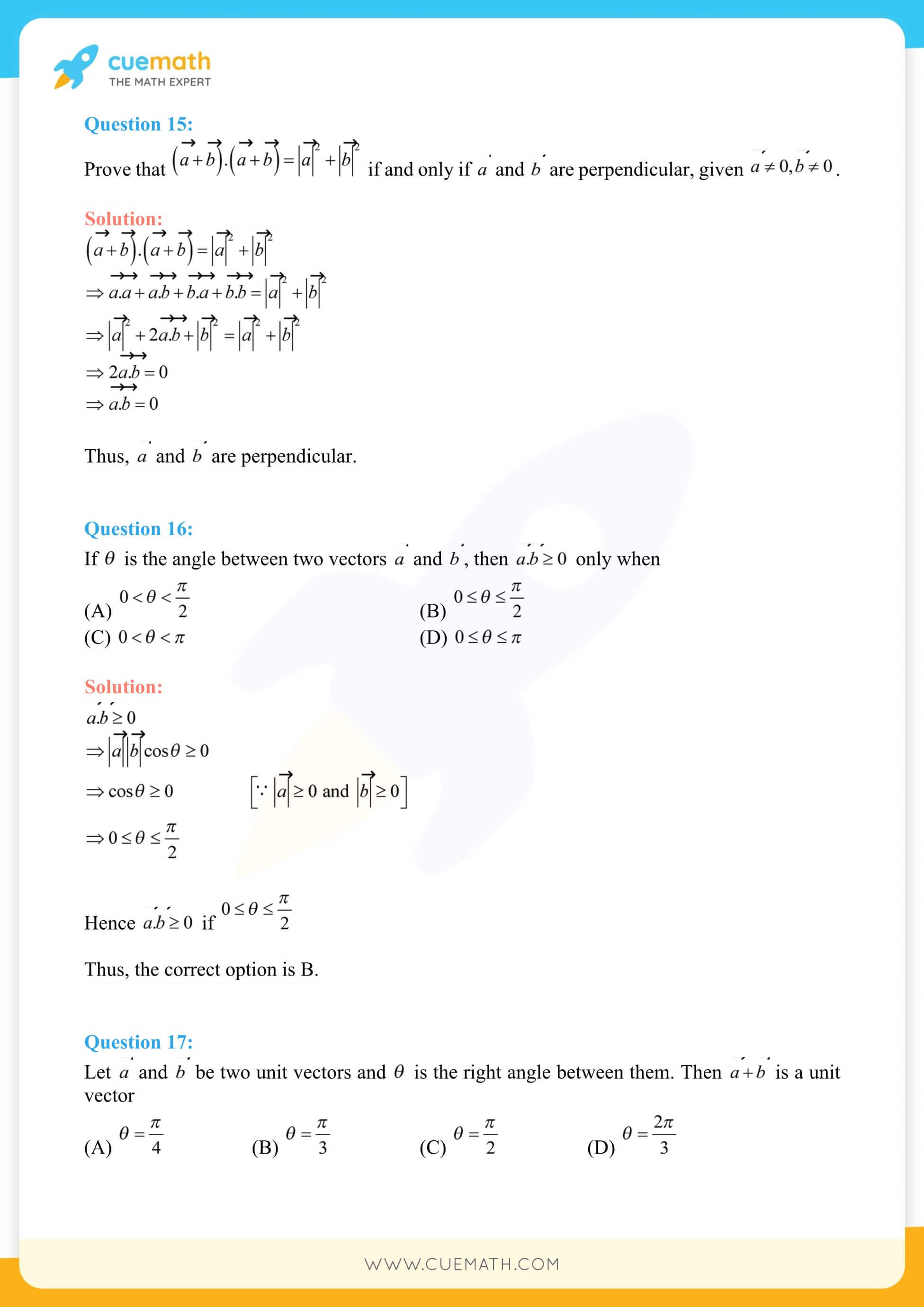
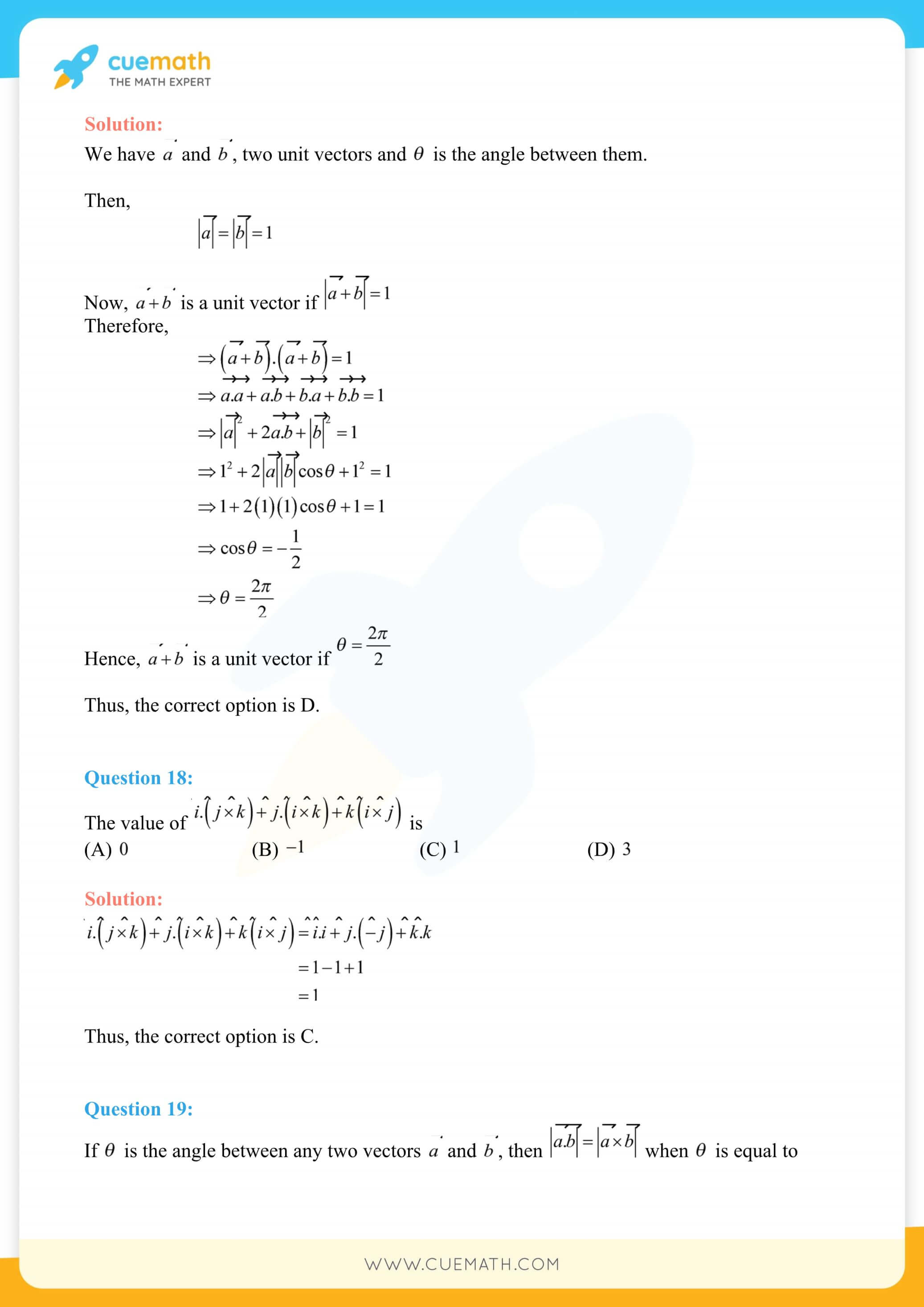
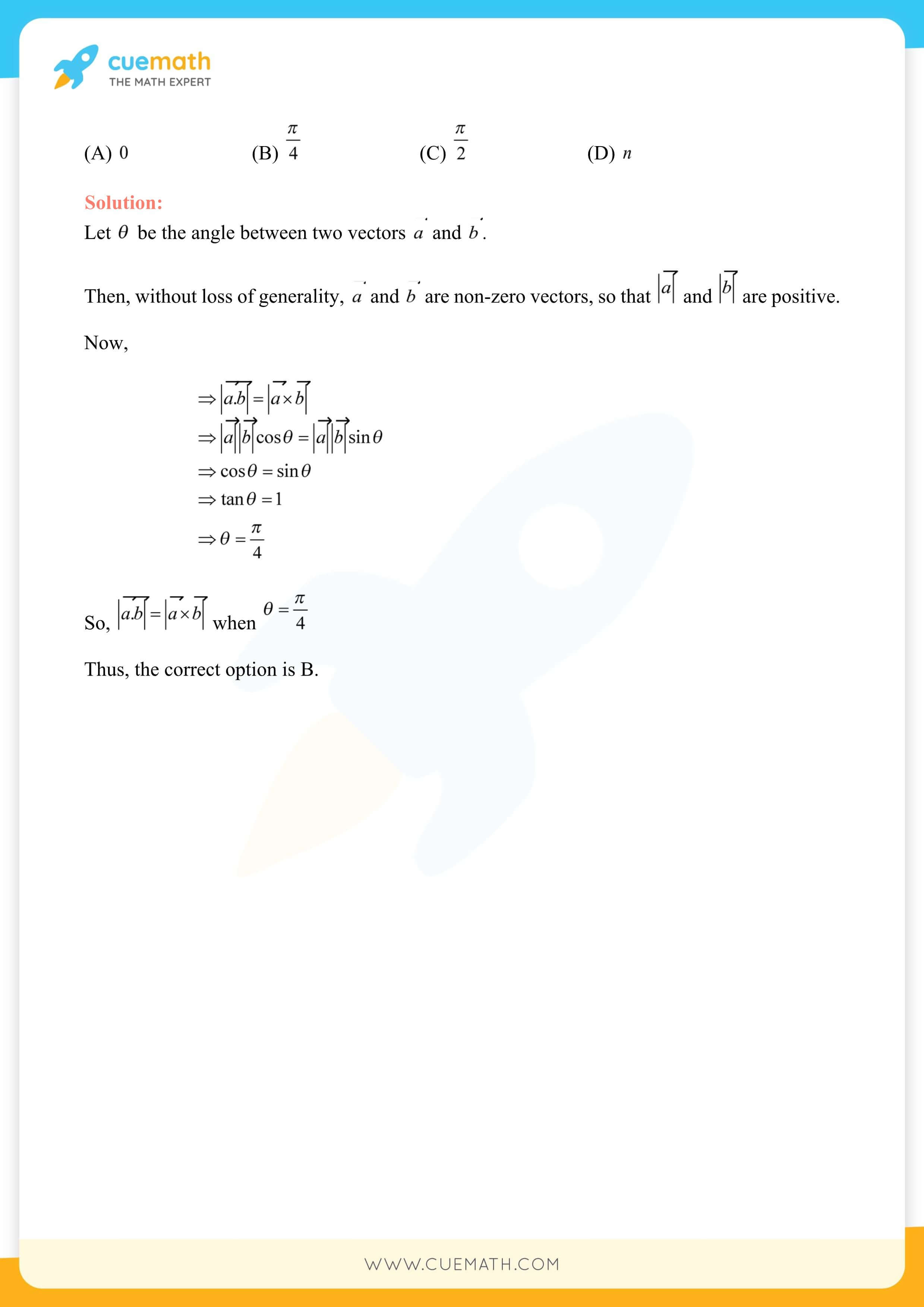
NCERT Solutions for Class 12 Maths Chapter 10 Vector Algebra
There are several chapters not only in mathematics but also physics that require kids to have a deep-seated knowledge of vectors. Thus, it is recommended to revise the matter contained in these links periodically and make notes of all the procedures as well as formulas outlined in them. To get a more accurate understanding of the scope of this lesson the NCERT Solutions Class 12 Maths Chapter 10 vector algebra for each exercise question is given below.
- Class 12 Maths Chapter 10 Ex 10.1 - 5 Questions
- Class 12 Maths Chapter 10 Ex 10.2 - 19 Questions
- Class 12 Maths Chapter 10 Ex 10.3 - 18 Questions
- Class 12 Maths Chapter 10 Ex 10.4 - 12 Questions
- Class 12 Maths Chapter 10 Miscellaneous Ex - 19 Questions
☛ Download CBSE Class 12 Maths Chapter 10 NCERT Book
Topics Covered: Laws of vector operations, addition, and multiplication of vectors, algebraic as well as geometric properties are topics in the class 12 maths NCERT solutions chapter 10. Vector projects along with dot and cross product are other important parts of this chapter.
Total Questions: Class 12 maths chapter 10 vector algebra has 63 sums divided into 20 simple computational questions, 37 medium-level, and 6 complicated problems.
List of Formulas in NCERT Solutions Class 12 Maths Chapter 10
NCERT solutions class 12 maths chapter 10 see the use of many formulas that help in performing arithmetic operations on vectors. The same laws that apply to whole numbers or scalars do not work in the case of vectors as these quantities have direction as well. Thus, by taking this element into account the computations for vectors differ. Additionally, there are many geometrical implications of vectors that are described in this chapter and these include further formulas as well as procedures. The formulas in the NCERT solutions for class 12 maths chapter 10 are given below. Kids should also make a formula chart so as to revise them quickly.
- Let S and T be two vectors then the dot product is given by S.T = |S| |T| cos θ.
- If θ = 0°, meaning both S and T are in the same direction then T = |S| |T|.
- If θ = 90°, meaning S and T are orthogonal then T = 0.
- If we have two vectors S = (S1, S2, S3 ….. Sn) and T = (T1, T2, T3 ….. Tn) then the dot product is given as S.T = (S1T1 + S2T2 + S3T3 ….. SnTn)
FAQs on NCERT Solutions for Class 12 Maths Chapter 10
Why are NCERT Solutions for Class 12 Maths Chapter 10 Important?
The NCERT Solutions Class 12 Maths Chapter 10 is very important as they give kids an idea of how to apply the concept of vectors to a wide variety of sums. This proves to be beneficial not only for attempting all mathematical examinations but also strengthens their learning for the subject of Physics. Kids can also get a good sense of how to differentiate between the various types of scalar and vector quantities.
Do I Need to Practice all Questions Provided in NCERT Solutions Class 12 Maths Vector Algebra?
There is a heavy focus on performing calculations such as computing the dot and cross product of vectors in the NCERT Solutions Class 12 Maths Vector Algebra thus, requiring kids to harness this skill thoroughly. The only way to do so is by practicing all the sums in the given exercise to improve this ability. Additionally, each sum has been expertly placed to give an idea of some important aspect of the topic and hence, must not be skipped.
What are the Important Topics Covered in NCERT Solutions Class 12 Maths Chapter 10?
All the topics covered in the NCERT Solutions Class 12 Maths Chapter 10 are equally vital as they elaborate on the different components of vectors such as direction cosines, dot product, cross product, section formula, as well as the related properties. In addition to this, all the topics are interlinked with each other meaning that students cannot proceed to the next section without having a stronghold of the previous one. Thus, all topics need to be studied.
How Many Questions are there in NCERT Solutions Class 12 Maths Chapter 10 Vector Algebra?
NCERT Solutions Class 12 Maths Chapter 10 Vector Algebra has a total of 63 questions that have been spread across 5 exercises including a miscellaneous one. Each exercise targets a different concept of vectors and provides wide-ranging sums from simple to complex to help kids get a holistic view of the subject. Along with this, the last exercise has higher-order problems that enable kids to be well-prepared for all exams.
How CBSE Students can utilize Class 12 Maths NCERT Solutions Chapter 10 effectively?
Students should first develop good visualization skills as well as an impeccable directional sense. If they can interpret a question or a solution by visualizing it, then it will become very easy for them to instill a strong conceptual foundation. Once they develop this, kids can move on to solving the exercise sums and use the NCERT Solutions Class 12 Maths Chapter 10 as a guide to cross-check their answers and tally their steps.
Why Should I Practice NCERT Solutions Class 12 Maths Vector Algebra Chapter 10?
It is necessary to practice the NCERT Solutions Class 12 Maths Vector Algebra Chapter 10 as this helps children to instill confidence in themselves. If they solve the different levels of sums in the NCERT textbooks correctly it will provide them with a sense of accomplishment as well as enable them to gauge which topics need to be revisited due to a shaky foundation. By regular revision, students can ensure that they are thorough with the topic and can maximize the probability of getting a good score in their examination.
visual curriculum
